Automatic Screwdrivers
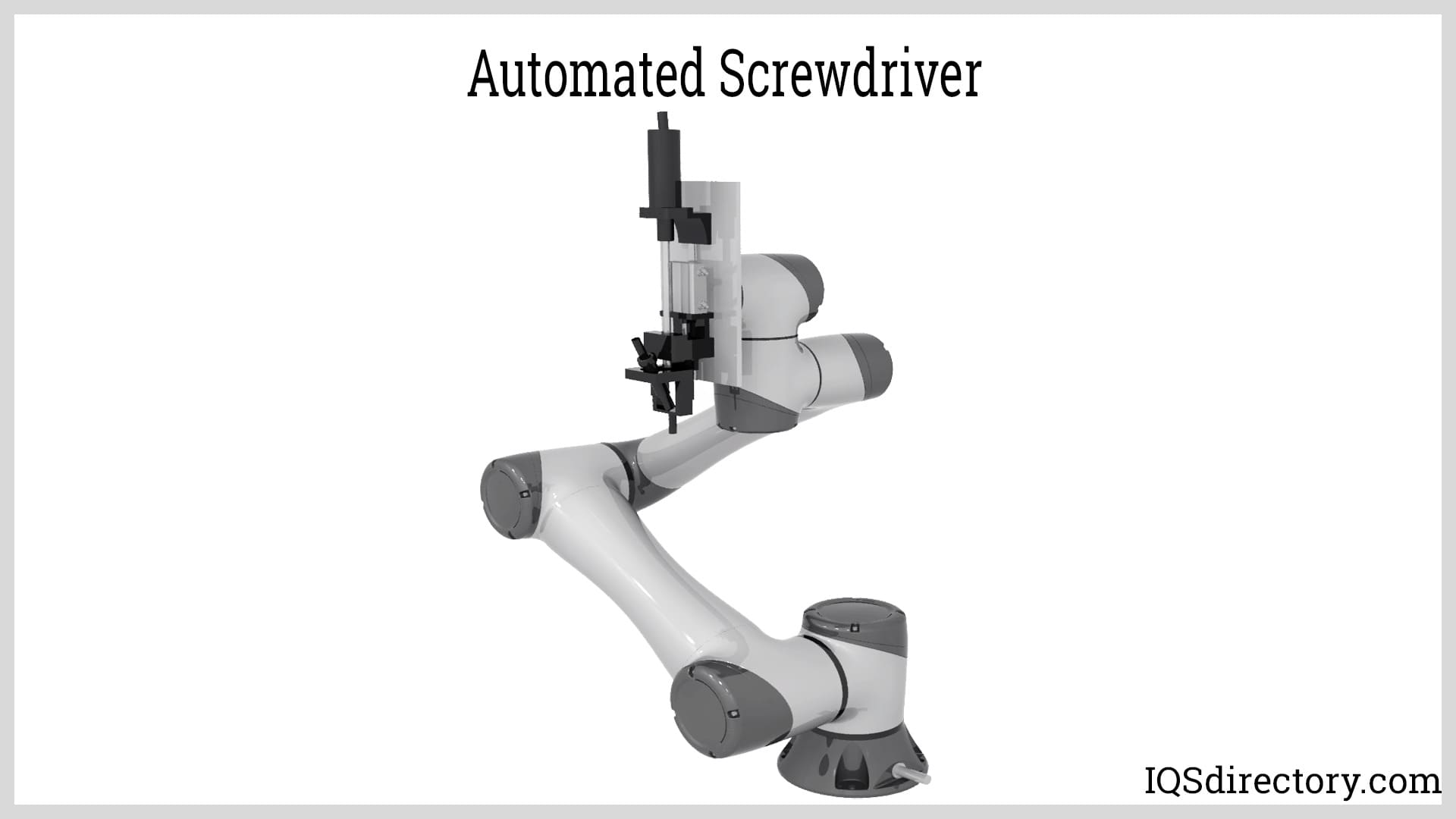
An automatic screwdriver is a piece of equipment that automatically inserts screws into a product during assembly and production. Since every production operation is unique and requires a...
Please fill out the following form to submit a Request for Quote to any of the following companies listed on
This article contains everything you need to know about robotic system integration and its use.
You will learn
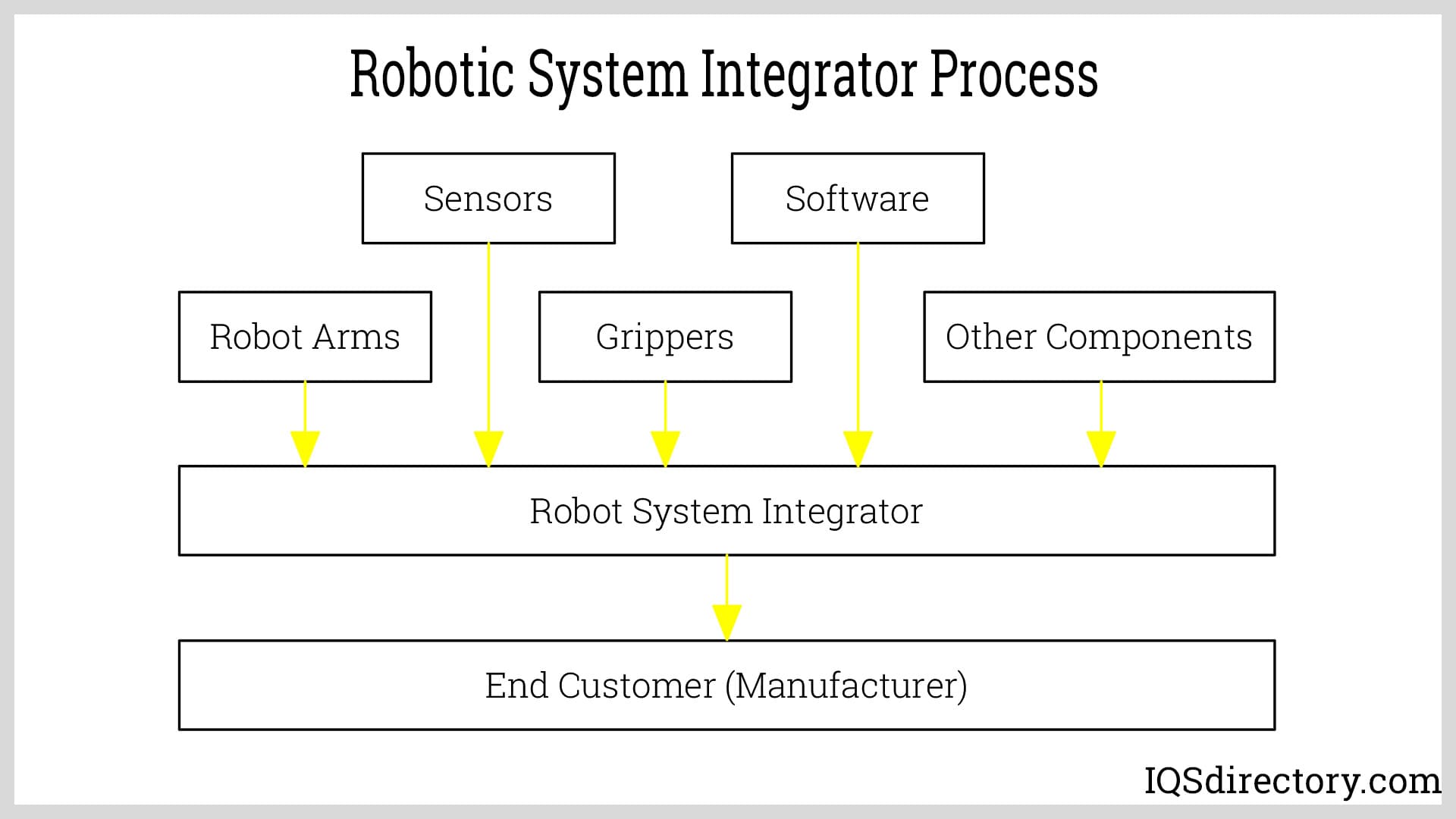
Robotic system integrators are experts dedicated to helping businesses automate a variety of functions. They craft robotic solutions customized to fit the unique requirements of an operation, providing comprehensive strategies for incorporating robotics into industrial workflows. Although robot manufacturers create a vast array of robotic technologies for many purposes, these are typically intended for generalized utilization.
Manufacturers of robots rely on robotic system integrators for their proficiency in assisting end users with selecting the optimal robotic solution tailored to specific environments. These integrators play an essential role in deploying, distributing, and innovating automated robotic systems.
Not every robot integrator can offer a solution to every challenge, as each focuses on a different subset of solutions. The right integrator is chosen based on the process that requires integration and the alignment of their expertise with the specific application. Their success history in handling similar applications is also a key factor in their selection.
Robotic system integrators focus on different sectors such as material handling, warehouse automation, supply chain, and manufacturing, as well as production and assembly tasks. Customers choose an integrator according to the integrator’s area of expertise.
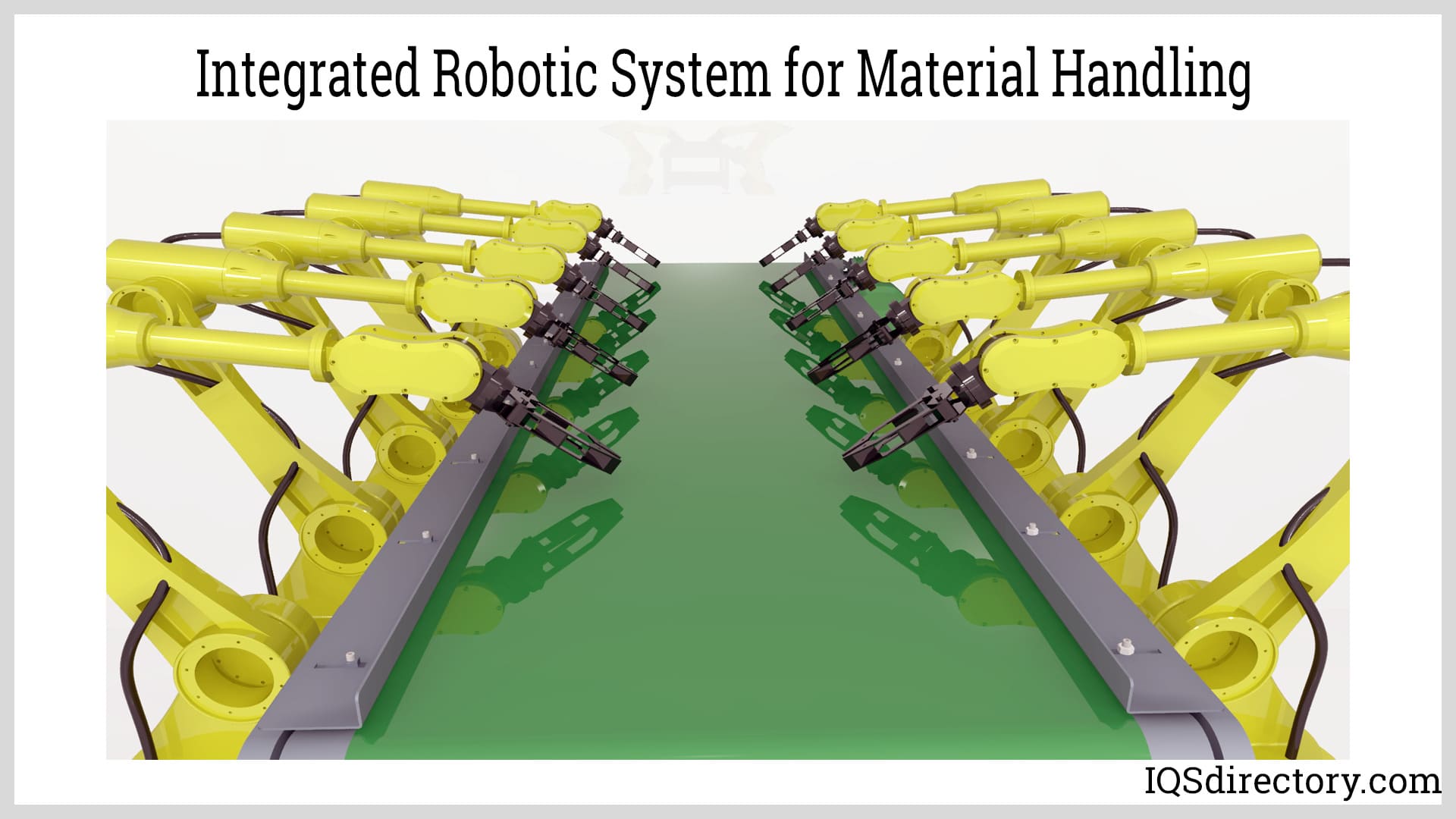
A robotic system integrator acts as a strategic automation partner, collaborating with manufacturing and industrial clients to develop optimal robotic automation solutions for their specific production challenges. The key distinguishing characteristic of a leading robotic system integrator is their extensive knowledge and expert understanding of robotics integration, industrial automation, control systems, and robotics engineering. After thoroughly examining and evaluating a client’s processes, a qualified integrator will outline diverse, customized approaches to implementing advanced robotic solutions—ranging from collaborative robots (cobots) and industrial robots to vision systems and end-of-arm tooling.
Among the many critical factors in selecting a robotic system integrator, industry experience and proven automation expertise are paramount. This experience goes beyond a basic knowledge of robotic systems and their operation; it also includes deep familiarity with the specific manufacturing sectors they have served, such as automotive, electronics, food and beverage, pharmaceuticals, warehousing, or metal fabrication. For instance, a robotic system integrator specializing in material handling automation may lack the specialized skills required for robotic assembly line integration, just as an expert in welding robotics may not be well-suited to pick-and-place or inventory management applications in eCommerce fulfillment.
In the initial stages of searching for a robotic system integrator, clients must recognize the various types of automation specialists and select a provider with specific experience in their target industry and relevant processes. Client references, successful case studies, and knowledge of sector-specific regulations can further demonstrate an integrator's ability to deliver effective solutions tailored to your operational requirements.
A robotic system integrator with experience in a specific industrial or supply chain function must be knowledgeable about the most effective and up-to-date robotics solutions, including articulated robots, SCARA robots, machine vision, and flexible automation cells. Often, clients are unaware of the intricacies, possibilities, and complexities of robotic capabilities or how technologies like AI-driven robotics or automated guided vehicles (AGVs) could improve their operations. They rely on their integrator to deliver high-quality, scalable solutions that seamlessly match their existing workflows while offering opportunities for process optimization, labor cost reduction, and increased production efficiency.
The best integrators take a consultative approach, performing thorough process audits and sharing options that balance automation goals, return on investment, and future scalability. This includes exploring options for robotic workcells, conveyor integration, safety systems, and digital connectivity for IIoT (Industrial Internet of Things) applications.
One of the greatest challenges of being a robotic system integrator is developing a fully customized, turnkey automation plan for each client, as no single solution fits all production environments. Leading robot manufacturers produce thousands of different systems for a broad spectrum of industrial operations, including robotic palletizing, parts inspection, assembly, packaging, and welding automation, each offering unique strengths in quality and performance. The experienced integrator’s role is to understand this expansive solution landscape and select the right combination—encompassing both hardware and robotic control software—to meet your organization’s objectives.
Once the selection process is completed, the robotic system integrator outlines a step-by-step plan for implementing and deploying the robots and associated automation equipment in the client’s environment. Each phase of the plan details not only robot deployment, but also system integration of conveyors, sensors, machine vision, and safety barriers, ensuring all systems interoperate without interfering with each other’s functions.
The implementation plan is a critical foundation for the success of robotic automation projects. The client must have a clear understanding of how these integrated technologies work together to improve throughput, reduce operational costs, enhance safety, maximize uptime, and achieve desired quality outcomes compared to legacy manual processes. A well-structured plan often features opportunities for employee retraining and the gradual scaling of automation over time.
A major component of the plan involves addressing financial, technical, regulatory, and safety factors—all of which are critical client considerations. The financial analysis should include payback period, total cost of ownership (TCO), expected maintenance needs, and projected savings. Clients will compare these cost factors to their current operations, and an experienced integrator may need to provide data demonstrating that, although the initial investment may seem substantial, long-term savings and productivity gains are realized when the automation is amortized over several years.
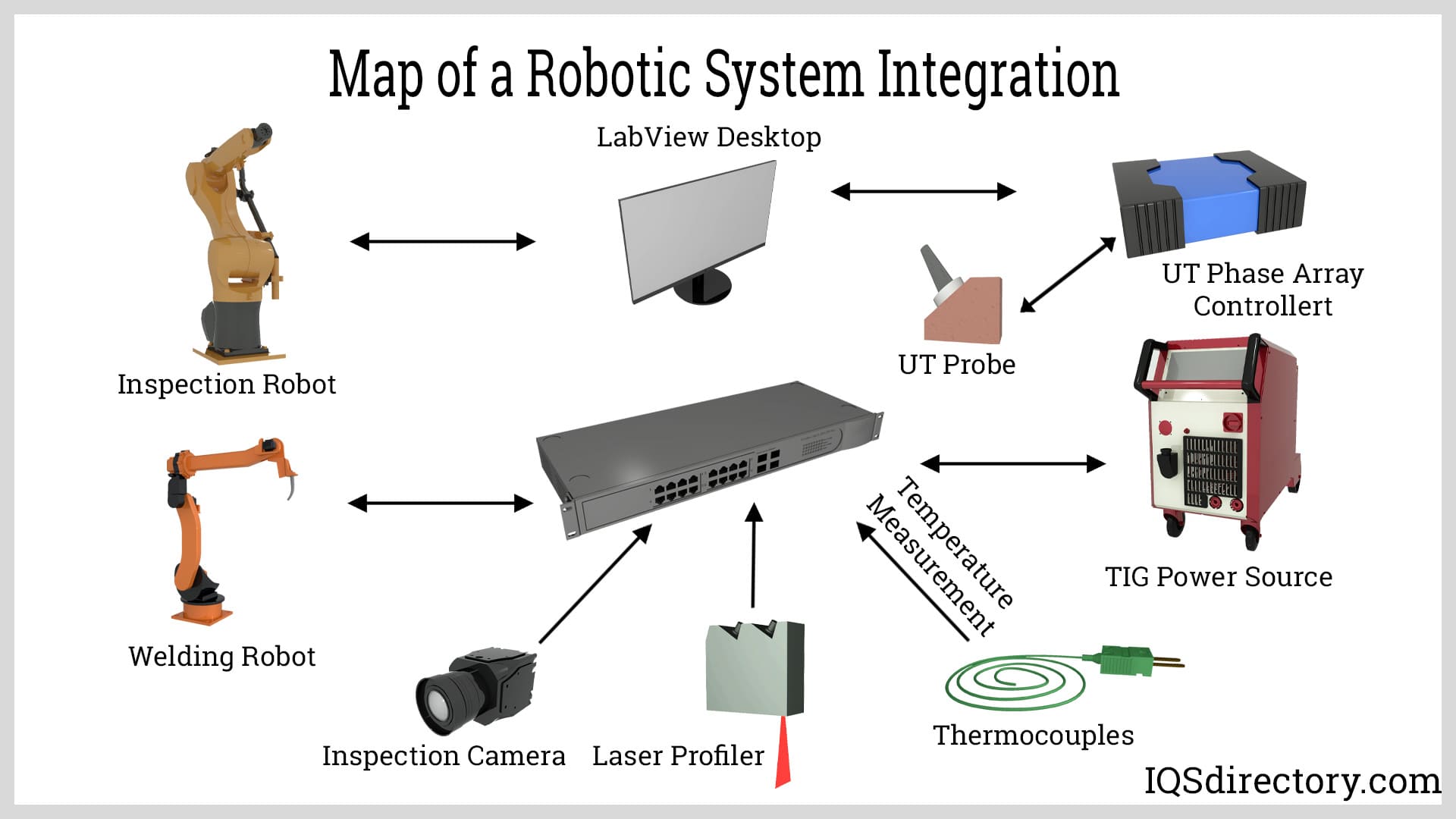
While all automation plans may appear perfect on paper, real-world implementation often reveals unforeseen variables. An experienced robotic system integrator is keenly aware of the challenges and technical issues that can arise—whether robot programming errors, sensor misalignment, software integration problems, or safety compliance concerns—and is prepared to address them rapidly. Each element of the integration must be subjected to rigorous testing, validation, and continuous refinement to guarantee that robotic arms, vision systems, conveyors, and safety protocols function cohesively, maximizing uptime and meeting targeted performance metrics.
During this phase, the integrator’s quality assurance processes—such as factory acceptance testing (FAT), site acceptance testing (SAT), and operator training—play a vital role in ensuring overall project success. Ongoing collaboration and open communication with clients foster a smooth transition from manual operations to automated processes, with performance benchmarks closely monitored at every stage.
Robotic system integration is an ongoing process that requires constant technical support, scheduled preventative maintenance, rapid troubleshooting, and software updates to maintain peak performance. Responsive and knowledgeable post-installation support can be a crucial factor for clients, especially those unfamiliar with the day-to-day technical aspects of robotics and automation infrastructure. Clients should ensure that their chosen system integrator provides comprehensive support services, including remote diagnostics, on-site maintenance, spare parts availability, and operator training resources.
A commitment to reliable support not only demonstrates superior customer service, but also enables the integrator to build long-term partnerships, improve system uptime, and showcase their technical skills to new and existing customers. Verify if your integrator offers options such as 24/7 support hotlines, online knowledge bases, and preventative maintenance agreements to extend the life of your automation investment.
In 2012, the Robotics Industries Association (RIA) established a formal certification process for robotic system integrators, setting a benchmark for evaluating the technical expertise, business practices, and safety knowledge of companies in the robotics integration industry. An RIA certification is a mark of trust that signifies a robotic system integrator has achieved the highest standards of industry proficiency, project management, and long-term customer success.
The stringent RIA certification process goes beyond simply issuing a certificate. It includes detailed on-site audits, technical evaluations of system integrator personnel, comprehensive safety training assessments, and a range of other compliance criteria—all of which ensure the certified company can deliver safe, reliable, and efficient robotic automation solutions. Companies that achieve RIA certification demonstrate the capabilities, skills, and commitment needed to provide the highest quality integration services—giving clients additional confidence in their choice of automation partner.
When evaluating robotic system integrators, always consider certification status and verify credentials through recognized organizations such as the RIA (now A3 – Association for Advancing Automation). This ensures your automation partner is up-to-date on robot safety standards, evolving best practices, and emerging automation technologies.
The types of robotic system integrators are as diverse as industrial operations themselves. They encompass a wide range of functions, applications, processes, and operations, with each specializing in a specific form of robotics. Whether installing, implementing, or updating robotic and automation systems, a skilled robotic system integrator is essential for ensuring a seamless and successful integration process tailored to the unique needs of industries such as manufacturing, logistics, automotive, and warehousing.
As automation technology and robotics engineering demands continue to grow and evolve, robotic systems—including industrial robots, articulated robots, and advanced automation solutions—are increasingly becoming a necessity for competitive operations. Modern robotic integration services address needs for increased productivity, reduced labor costs, and enhanced workplace safety. With rapid advancements in robotics, artificial intelligence, and machine vision, it is crucial to hire an expert system integrator who is knowledgeable in the field and can deliver the most effective, custom-tailored solutions to optimize performance, efficiency, and ROI.
Warehousing has long utilized a variety of robotic solutions to streamline sorting, storing, picking, and packing orders. Advanced warehouse automation systems now incorporate autonomous mobile robots (AMRs), automated guided vehicles (AGVs), and robotic palletizers to increase throughput and accuracy. The surge in robotic solutions has been driven by the rise of e-commerce and online retailing, which demands timely and efficient order fulfillment and last-mile deliveries. Warehouse integrators often specialize in integrating robotics with inventory management software, conveyor systems, and logistics management platforms to create end-to-end automated fulfillment centers.
One of the basic concerns in manufacturing and assembly is keeping workers on task and at their workstations while ensuring safety and operational efficiency. Collaborative robots, often referred to as "cobots," are designed to work safely alongside human employees to finish processes and assist in redundant or repetitive tasks. By automating physically demanding or monotonous work, cobots allow workers to concentrate on more complex, creative, or mental tasks, reducing risk of injury and increasing workplace productivity. These flexible automation solutions are especially popular in small and medium enterprises (SMEs) looking to implement cost-effective robotics without extensive reconfiguration of existing production lines.
Over the last thirty or forty years, assembly operations have been steadily integrating robotics into the process to avoid human errors, reduce assembly times, and provide detailed inspection of final products. Robotic assembly system integrators often deploy pick-and-place robots, SCARA robots, and precision automated workcells to achieve higher accuracy and consistency in repetitive assembly tasks. Leveraging vision systems and data-driven quality control measures, these integrators help ensure product defect reduction, improved traceability, and compliance with stringent manufacturing standards.
Beyond warehousing, collaborative, and assembly robots, several other specialized robotic system integrators address diverse automation applications:
Choosing the right robotic system integrator often depends on the complexity of your processes, required integration with existing machinery, and desired outcomes—such as improving labor efficiency, minimizing downtime, or achieving digital transformation of your operations. For companies evaluating robotic automation solutions, it is crucial to consider an integrator’s industry experience, technical support capabilities, and ability to deliver scalable robotic platforms that can adapt as your needs evolve.
A robotic system integrator helps businesses automate processes by designing, customizing, and implementing robotic solutions tailored to specific operational needs, ensuring optimal fit and seamless integration within existing workflows.
Select an integrator with proven experience in your industry, demonstrated by relevant case studies, references, safety and regulatory knowledge, and a track record of successful automation solutions in similar applications.
Types include warehousing, collaborative robots (cobots), assembly, palletizing and packaging, material handling, inspection and quality control, and welding and painting integrators, each specializing in targeted automation solutions.
Certification, such as from the Robotics Industries Association (RIA), signifies that an integrator meets high industry standards in safety, technical expertise, and project management, ensuring safe, reliable, and effective automation solutions.
Expect services like technical support, preventative maintenance, rapid troubleshooting, software updates, remote diagnostics, on-site visits, spare parts, operator training, and 24/7 assistance to maintain system performance and uptime.
Warehousing uses integrators to implement robotics for sorting, picking, packing, and fulfillment, leveraging technologies like AMRs and AGVs for improved throughput—especially vital due to e-commerce and retail-sector demands.
There is a vast array of robots available for integration into production, manufacturing, material handling, hospitals, and other industries. Clients need only to inquire, and a robotic system integrator will provide a suitable robotic solution. With a robot for nearly every type of operation and process, an experienced robotic system integrator knows exactly where to find the right one for the job.
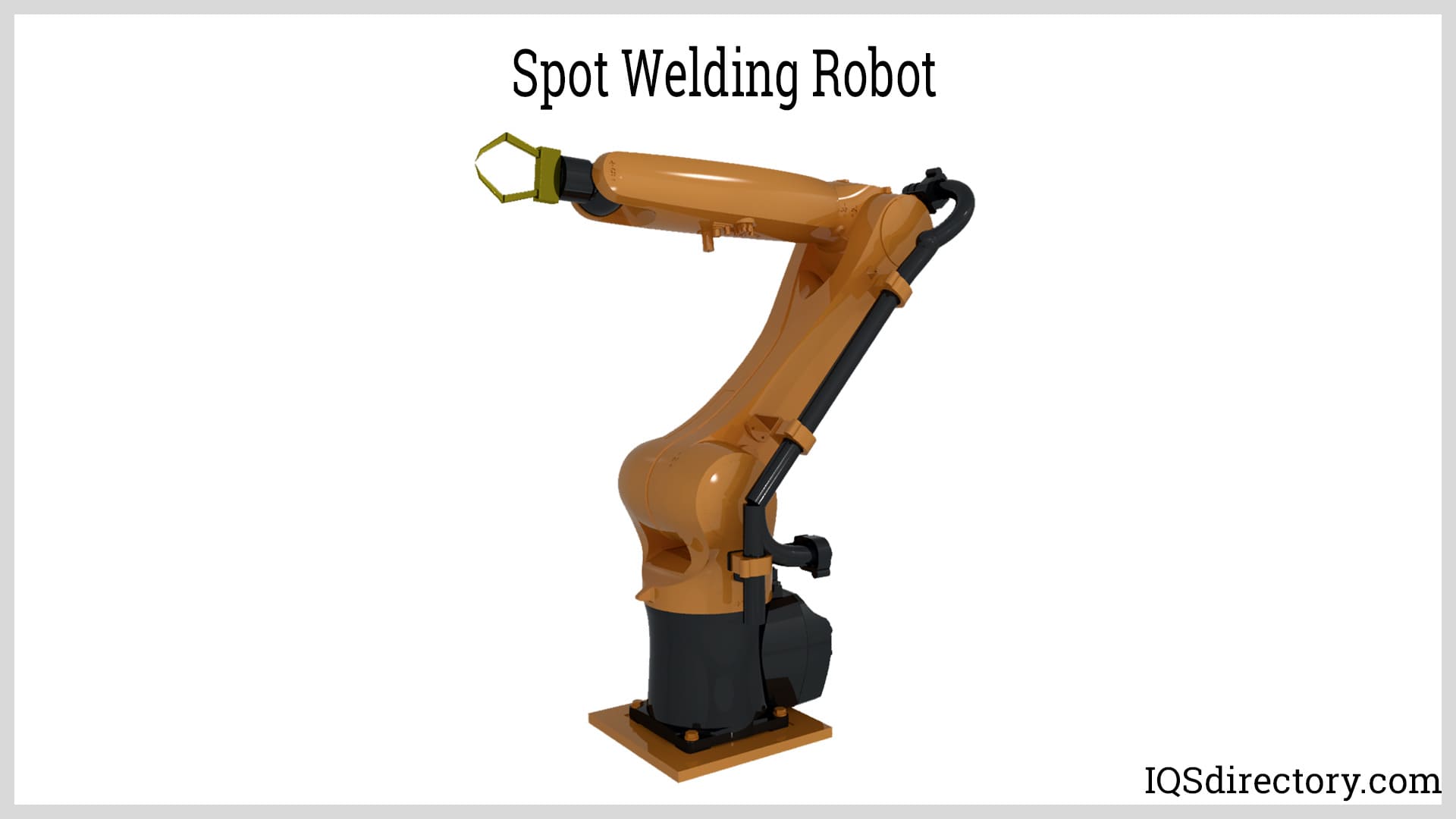
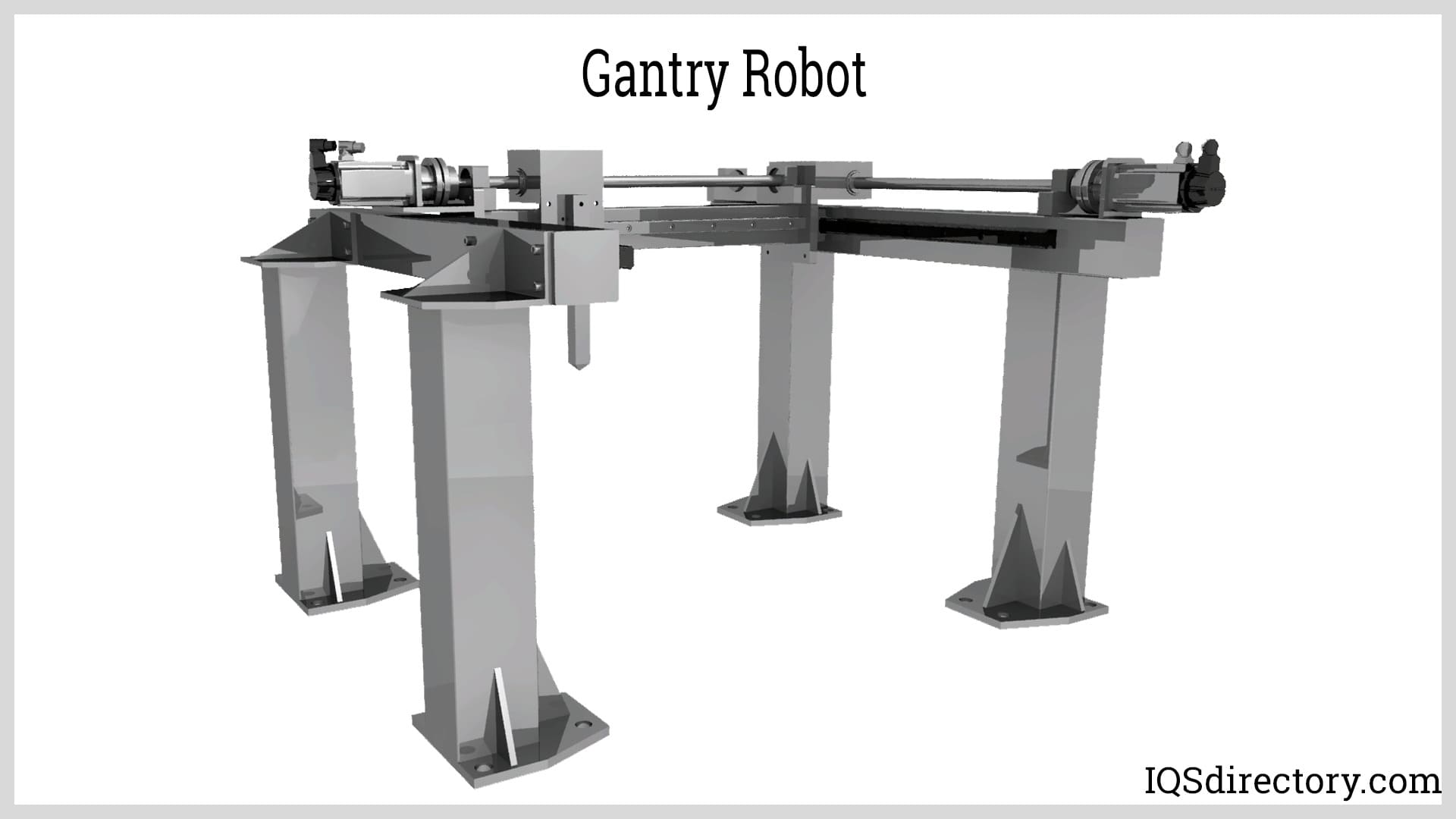
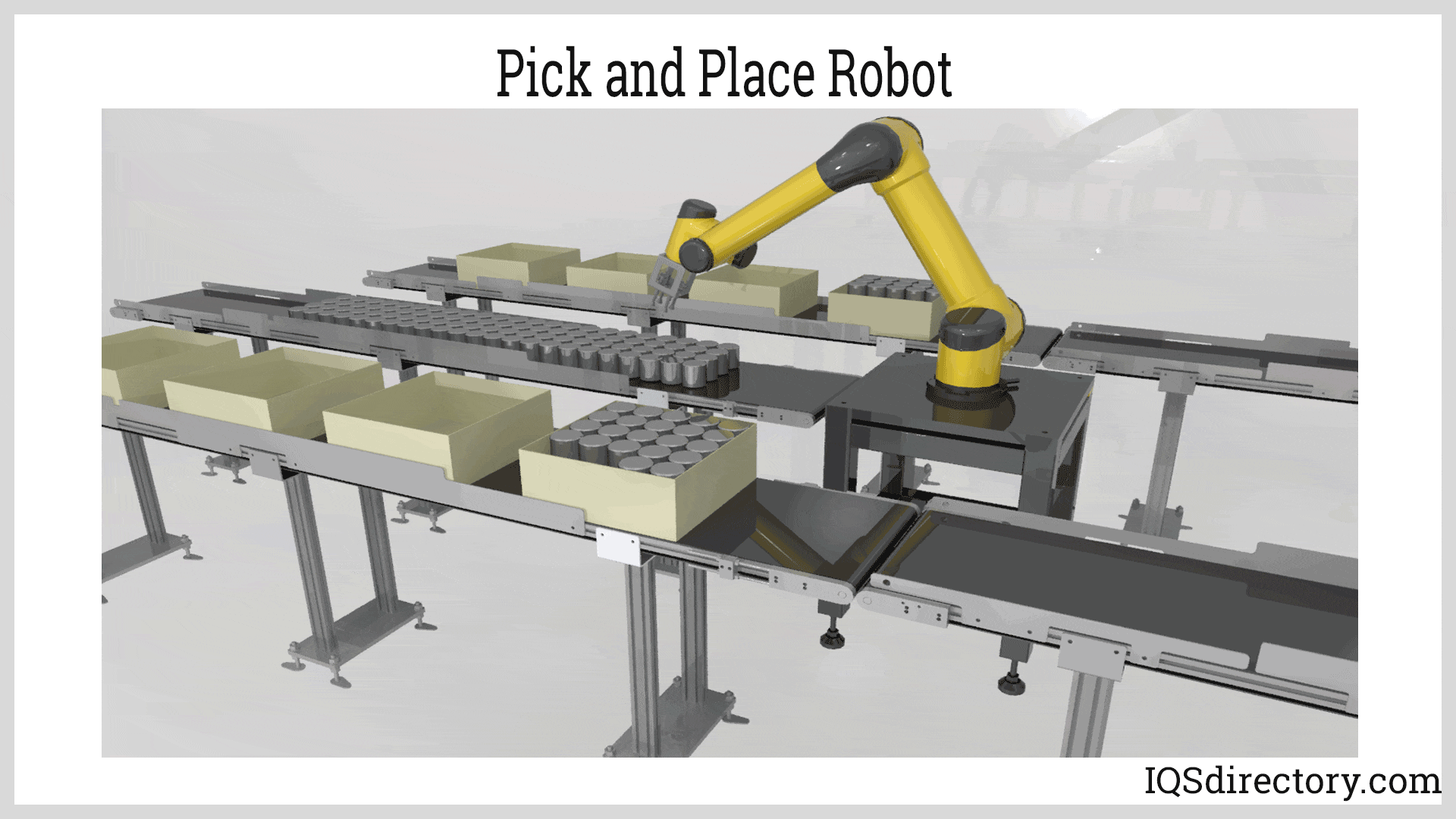
Although robotic functions and automated functions are two separate entities, they are processes that integrate for the improvement of production and efficiency. The focus of robotics is the design, construct, and programming of robots to complete different types of activities. They can be mobile or static and are capable of being adjusted and reprogrammed to meet the needs of an application.
While robots are oriented toward performing a single task or a set of tasks, automation operates on a grander scale and involves a wide range of technologies that include computer systems, software, building control systems, and is involved in the overall functions of a production system. Robots can be integrated into the automation process and may become a critical aspect.
Robots are tools that are designed to perform certain tasks. They are very much like the other pieces of machinery that stamp, bend, wire, and form various aspects of a product. In essence, they are highly developed and technologically advanced pieces of equipment that save on labor costs, work very efficiently, and are able to operate continuously.
By comparison, automation integration oversees every part of a production facility and coordinates the different activities to ensure the efficient completion of applications, processes, and product movement. In an organization that has several robots performing various tasks, automation integration ensures that all of the robots perform their functions without interfering with other processes and applications.
The processes of robotics and automation have become essential parts of advancing the modernization of industry. Their use in combination increases the precision, safety, and efficiency of manufacturing. Their interaction has led to innovations and improvements in industrial applications. The integration of AI with robotics and automation systems is rapidly improving the intelligence and adaptability of equipment to further increase and improve production.
Automation integration involves programming the tasks of robots into the control system of a manufacturer. It is a method that allows for control of all equipment in a facility from one location. The input actions are downloaded to the robot controller. This aspect of the process can be used for programming the actions of a single robot or a group of robots. The use of automation integration makes it possible to change the activities of robots and repurpose them.
Many years ago, when a factory was going through a changeover, operations would shut down for weeks or months depending on how much change was necessary. This practice was common in the auto industry, which went through model changes every year. Automation integration has eliminated the need for such stoppages and made it possible to easily alter and adjust production parameters.
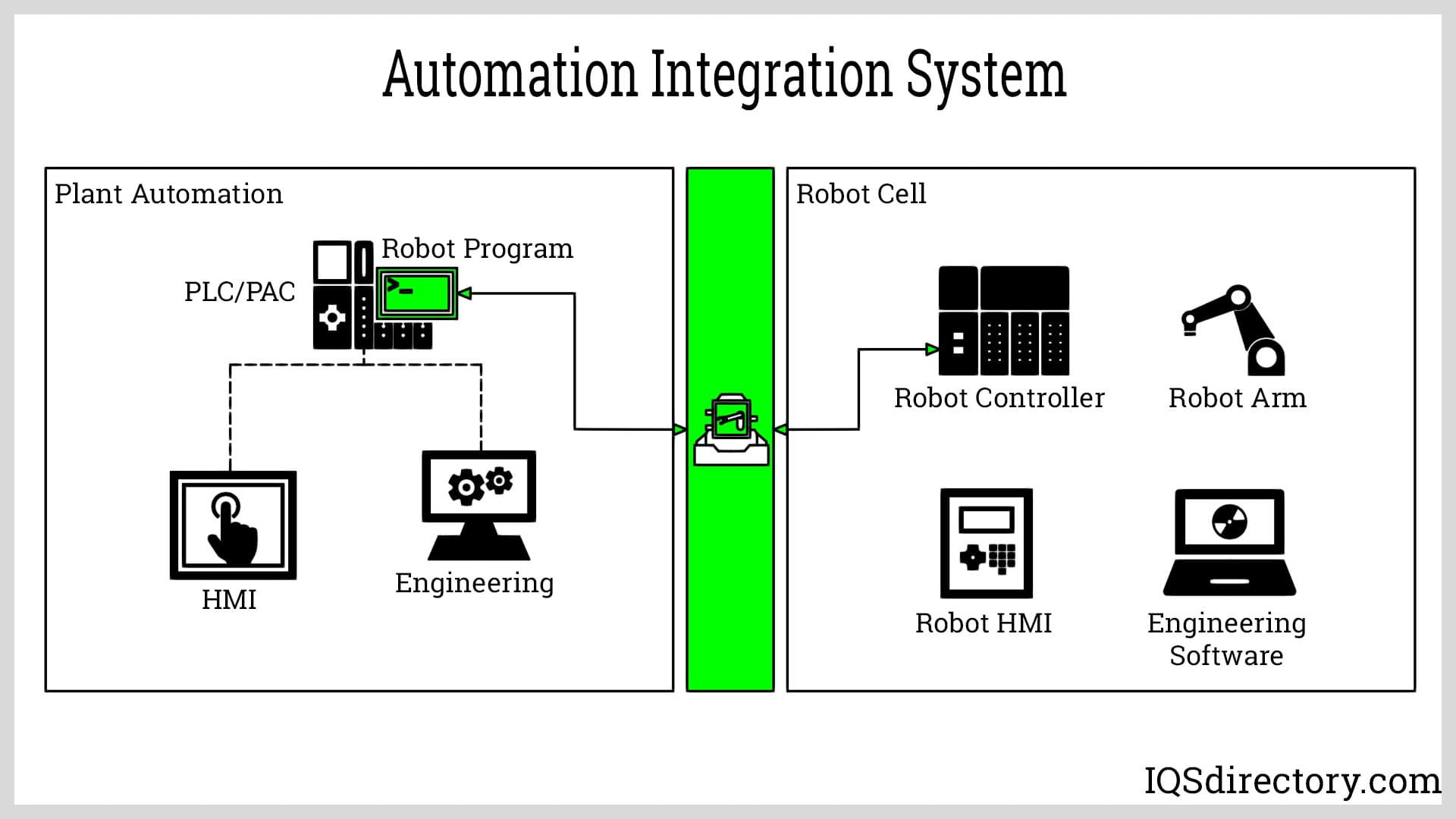
Although automation integration has become an excellent solution, in its initial stages, there were problems due to the inability to uniformly control all types of robots
since each robot manufacturer had their own unique software and programming. When robot manufacturers realized the division between control systems and programming made it difficult to use automation integration, the primary robot manufacturers, ABB, Comau, Epson, Fanuc, Jaka, Kawasaki, Kuka, Nachi, Panasonic, Stäubli, TM Robot, Yamaha, and Yaskawa, worked together to develop a shared solution to make the use of an automation integration system a reality.
The joint work led to the development of a uniform data interface between the PLC and the robot controllers to make robot programming more efficient. Robot programs are written using a PLC with the necessary functions and reporting data. Once the commands are received by a robot, they are converted into the proprietary language of an organization.
Automation integration is a major step in the progress of modern manufacturing. Its use has radically improved efficiency and productivity. The next steps in the process involve the use of AI to enhance the thinking and capabilities of the automation integration process to increase the abilities of robots to function more independently.

An automatic screwdriver is a piece of equipment that automatically inserts screws into a product during assembly and production. Since every production operation is unique and requires a...
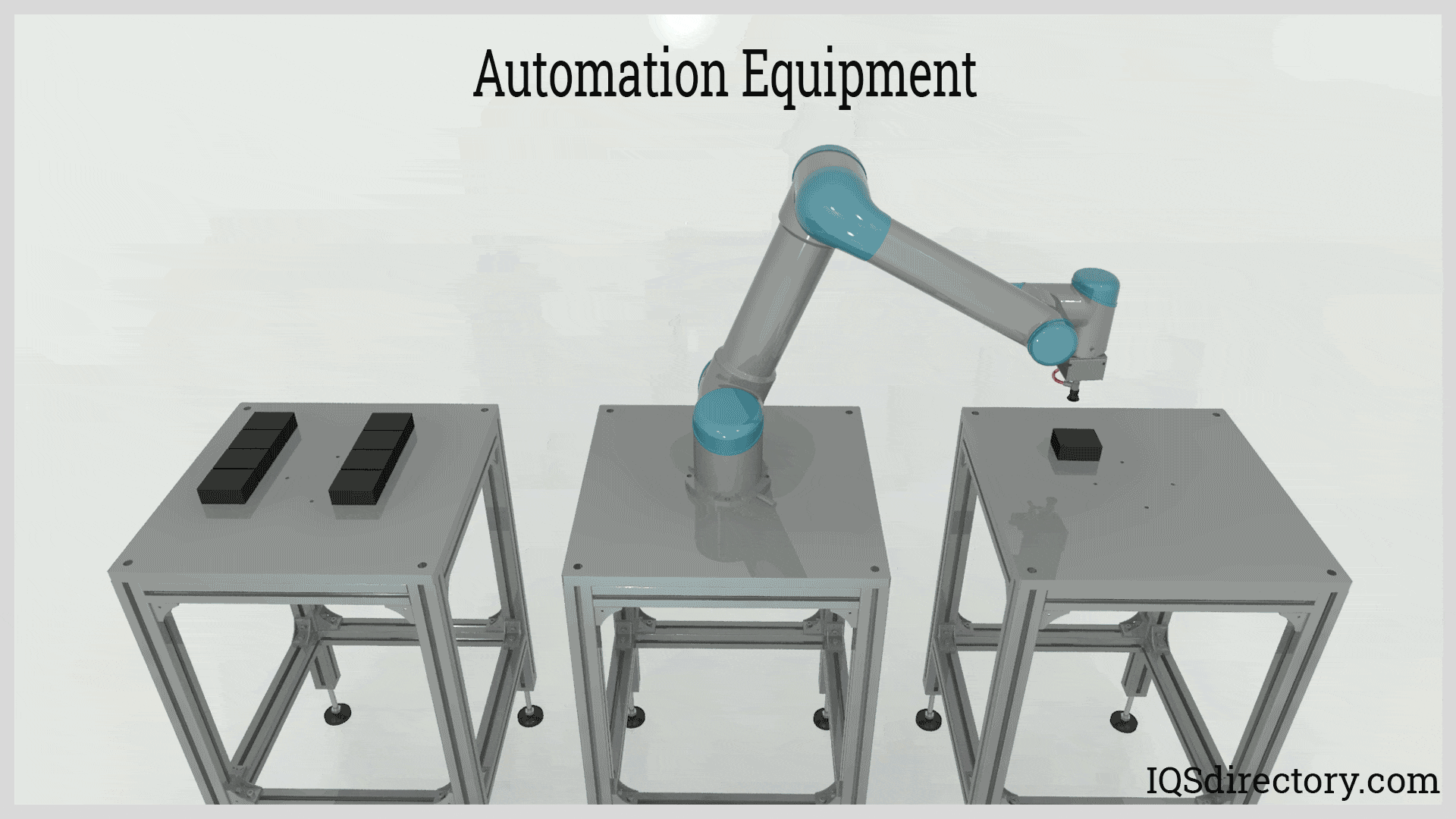
An automation system is an integration of sensors, controls, and actuators designed to perform a function with minimal or no human intervention. The field concerned in this subject is called Mechatronics which is an...
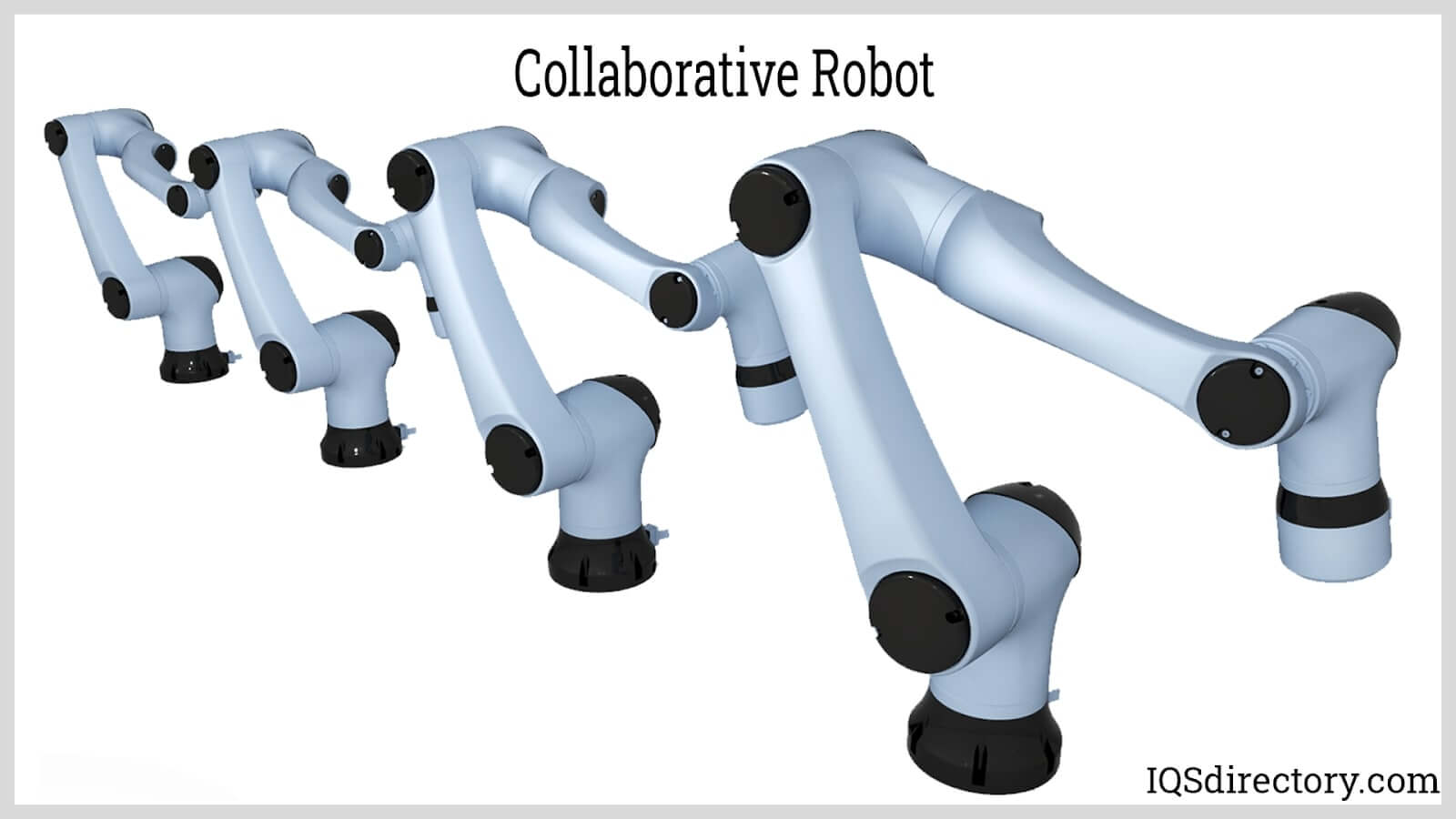
Collaborative robots, also abbreviated as Cobots, are the newest technology in robotics. They have changed the automation world significantly. These robots can work safely together with workers, hence are...
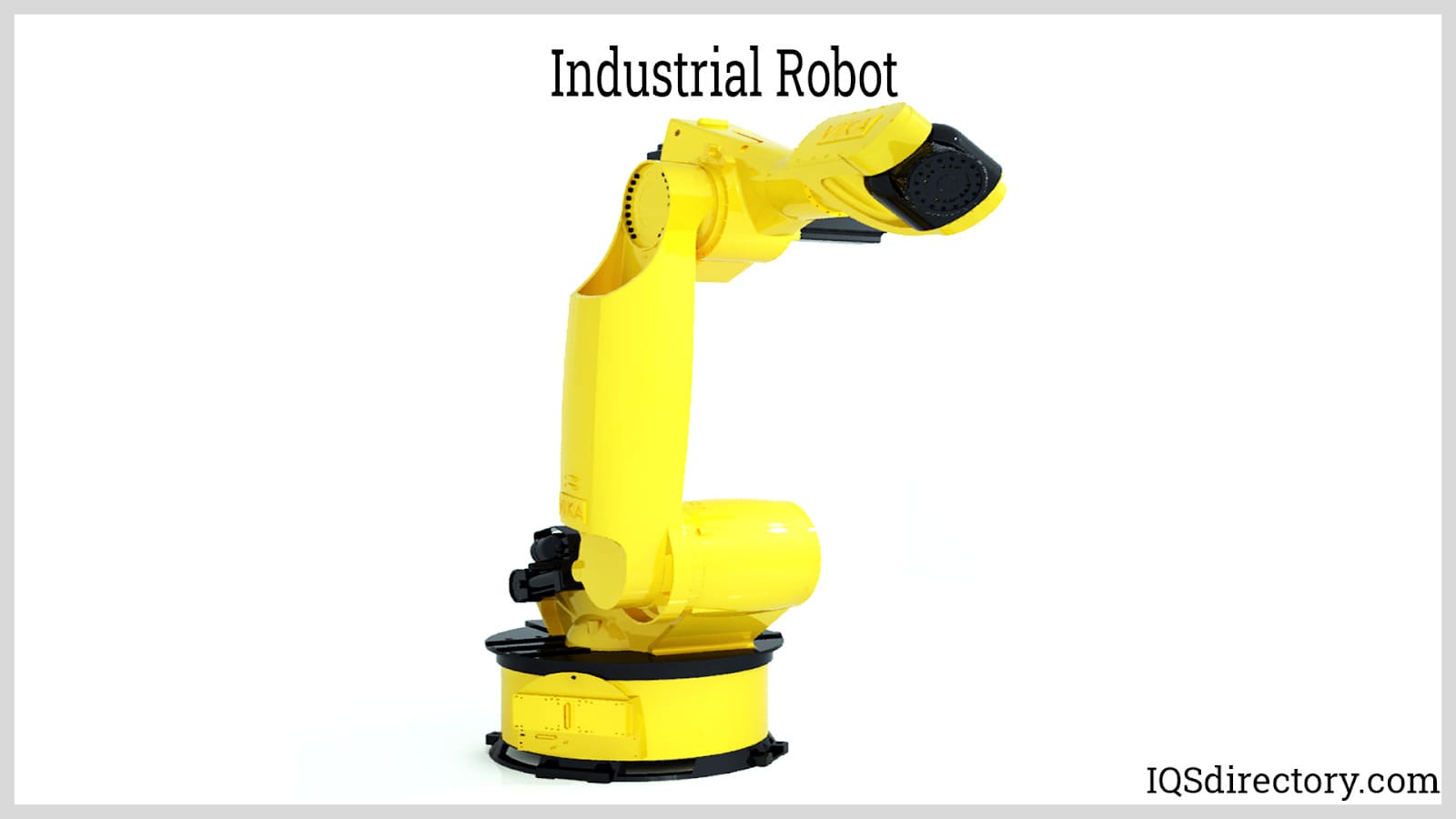
An industrial robot is an autonomous system of sensors, controllers, and actuators that executes specific functions and operations in a manufacturing or processing line. They operate continuously through repetitive...
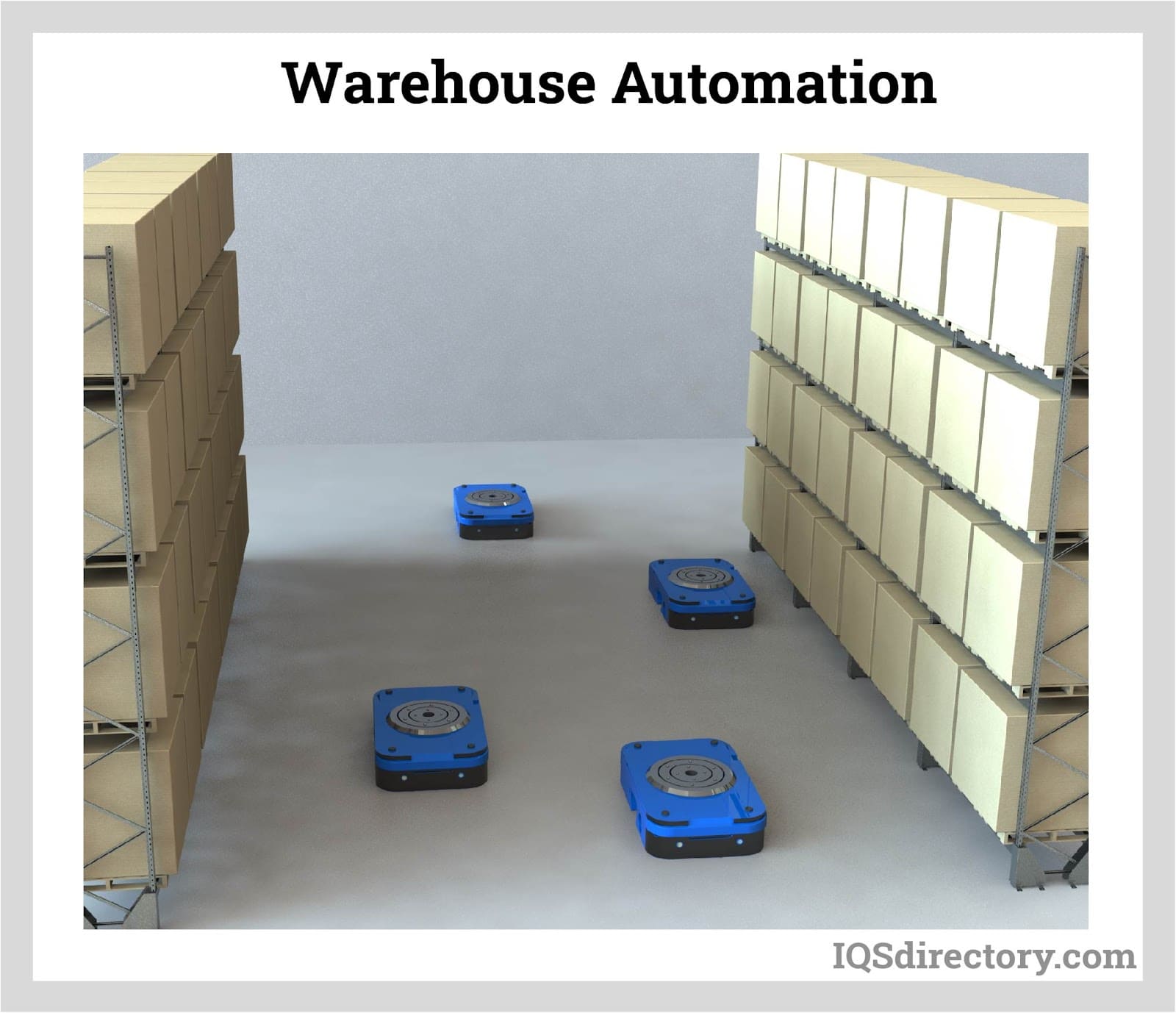
Warehouse automation is the process of replacing repetitive tasks with systems that are automated. The main goal is to remove labor-intensive duties that consume time. As a result, the workers can focus more on...
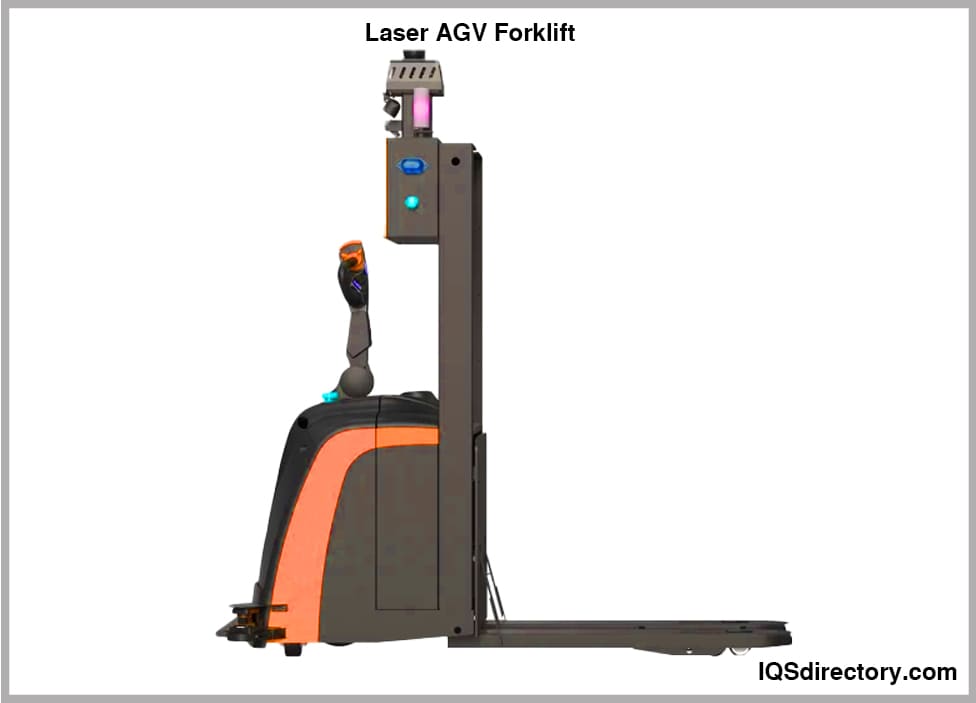
An AGV forklift is a driverless self-operating robotic device that has the ability to carry, lift, retrieve, and place loads for easy transfer from one location to another. An automatic guided vehicle (AGV) forklift is a computer controlled mechanism that...
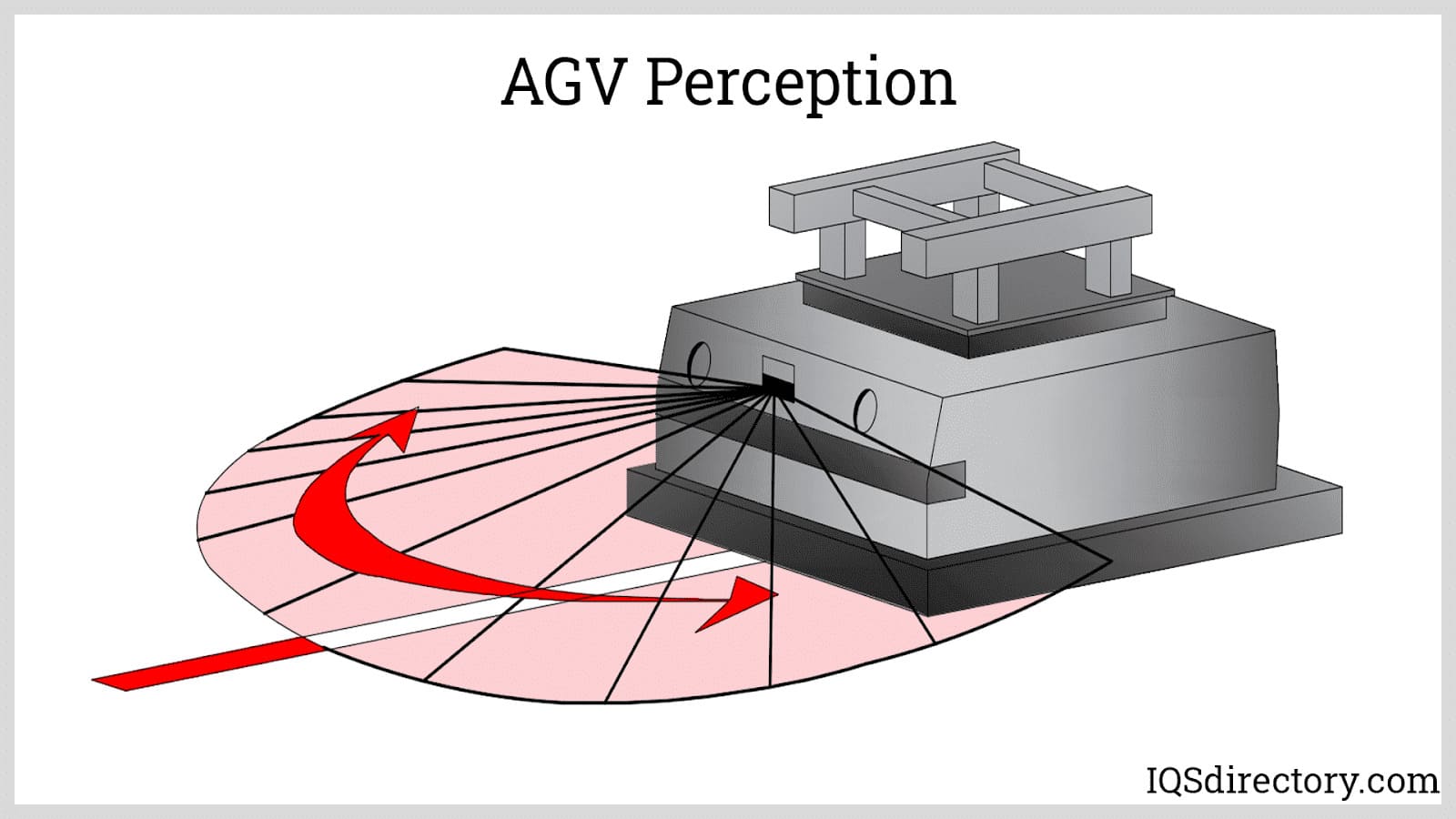
Automated guided vehicles (AGV) or mobile robots are types of guided robotic systems that are not bounded by a fixed range of motion. Rather, it is self-contained and can move along a line, surface, or space...
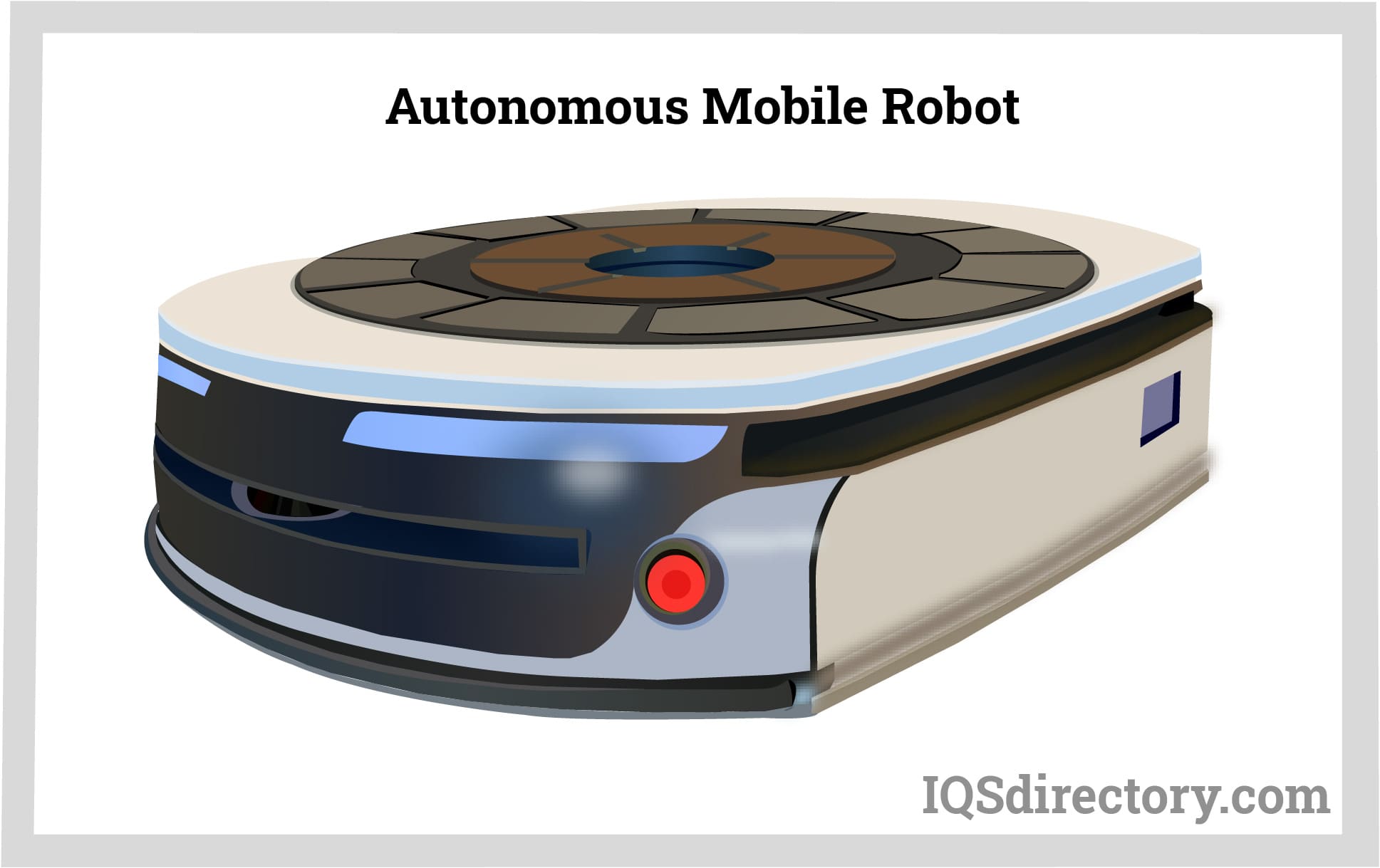
An autonomous mobile robot (AMR) is a self-propelled self-powered mechanism designed to perform repetitive tasks or organizational functions using an internal guidance system. They are able to navigate their...
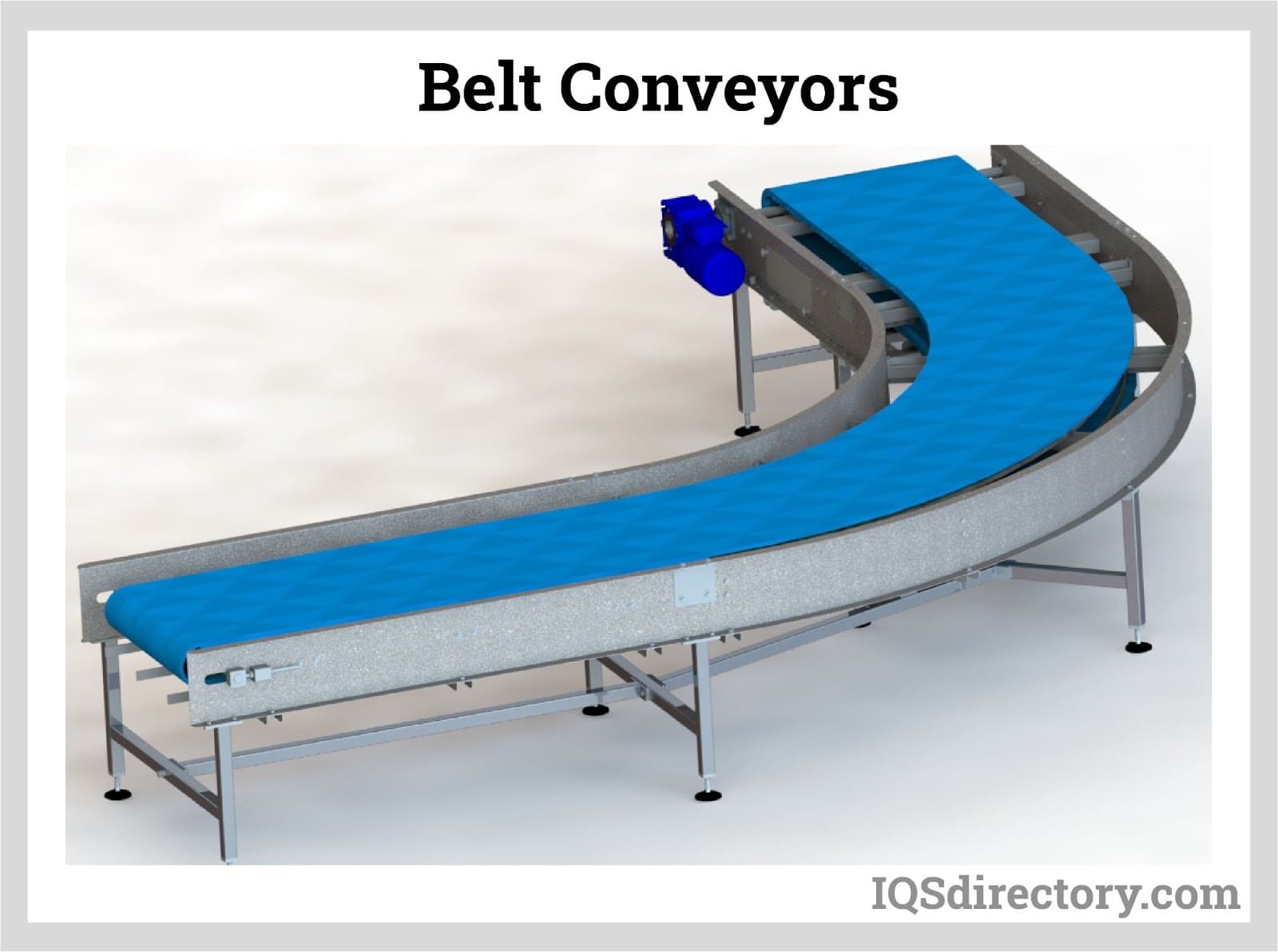
A belt conveyor is a system designed to transport or move physical items like materials, goods, even people from one point to another. Unlike other conveying means that employ chains, spirals, hydraulics, etc...
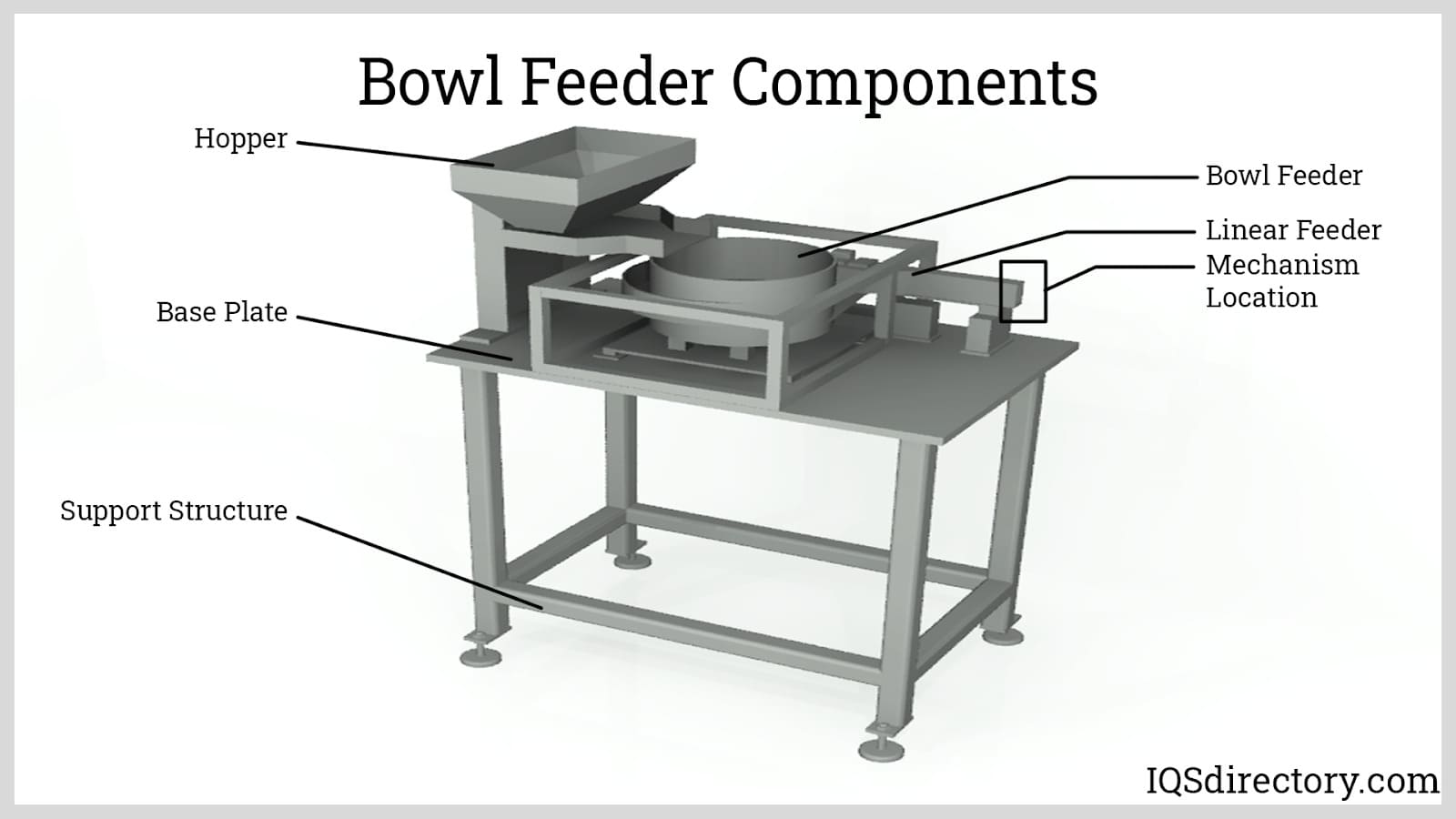
A bowl feeder is a mechanism for supplying small parts and components to a production line or for sorting bulk items for rapid use. A self contained bowl feeder system has a bowl that sets on a spring loaded base that moves vertically...
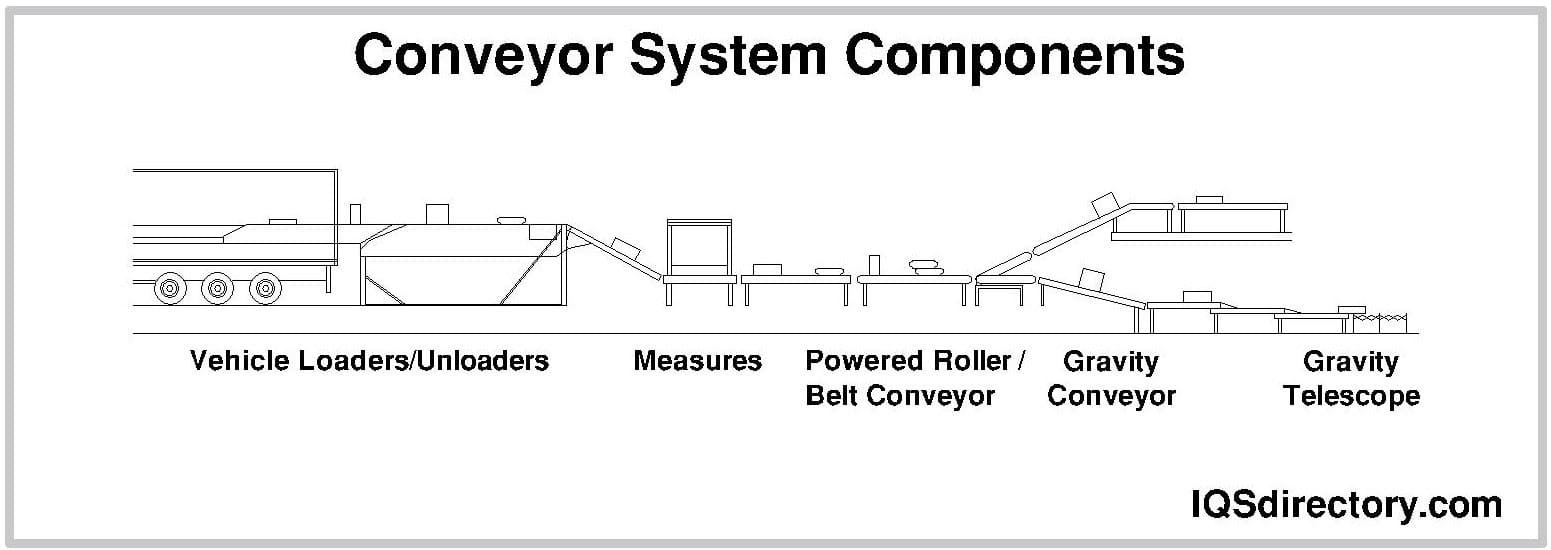
A conveyor system is a method for moving packages, products, supplies, parts, and equipment for production, shipping, or relocation. The different types of conveying systems include pneumatic, screw, belt, and roller. The construction of individual systems depends on the materials...
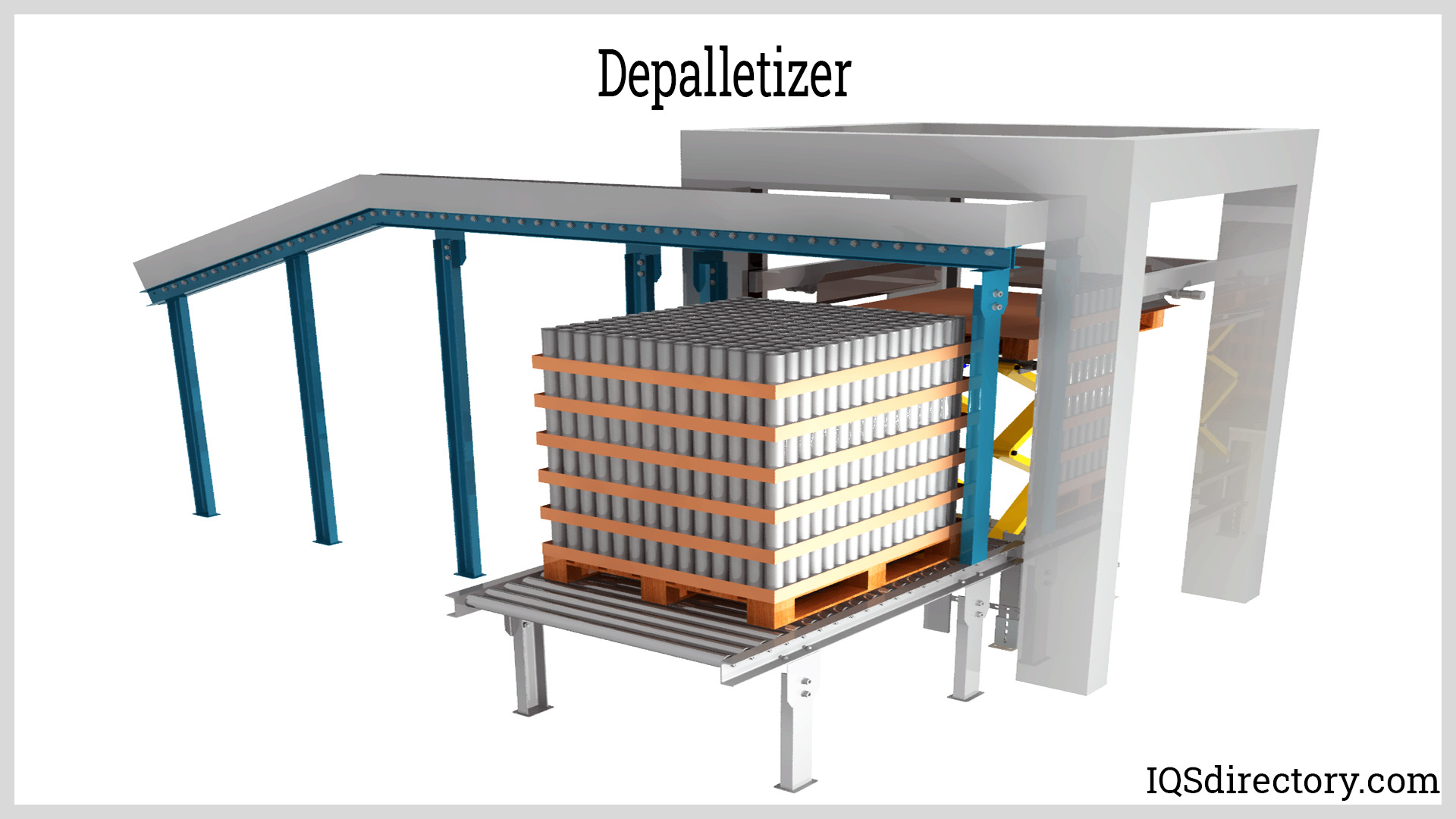
Palletizing is the process of putting items on a pallet. The process of emptying the loaded objects in the reverse pattern is known as depalletizing. A pallet is a flat, square-shaped platform used to transport and...
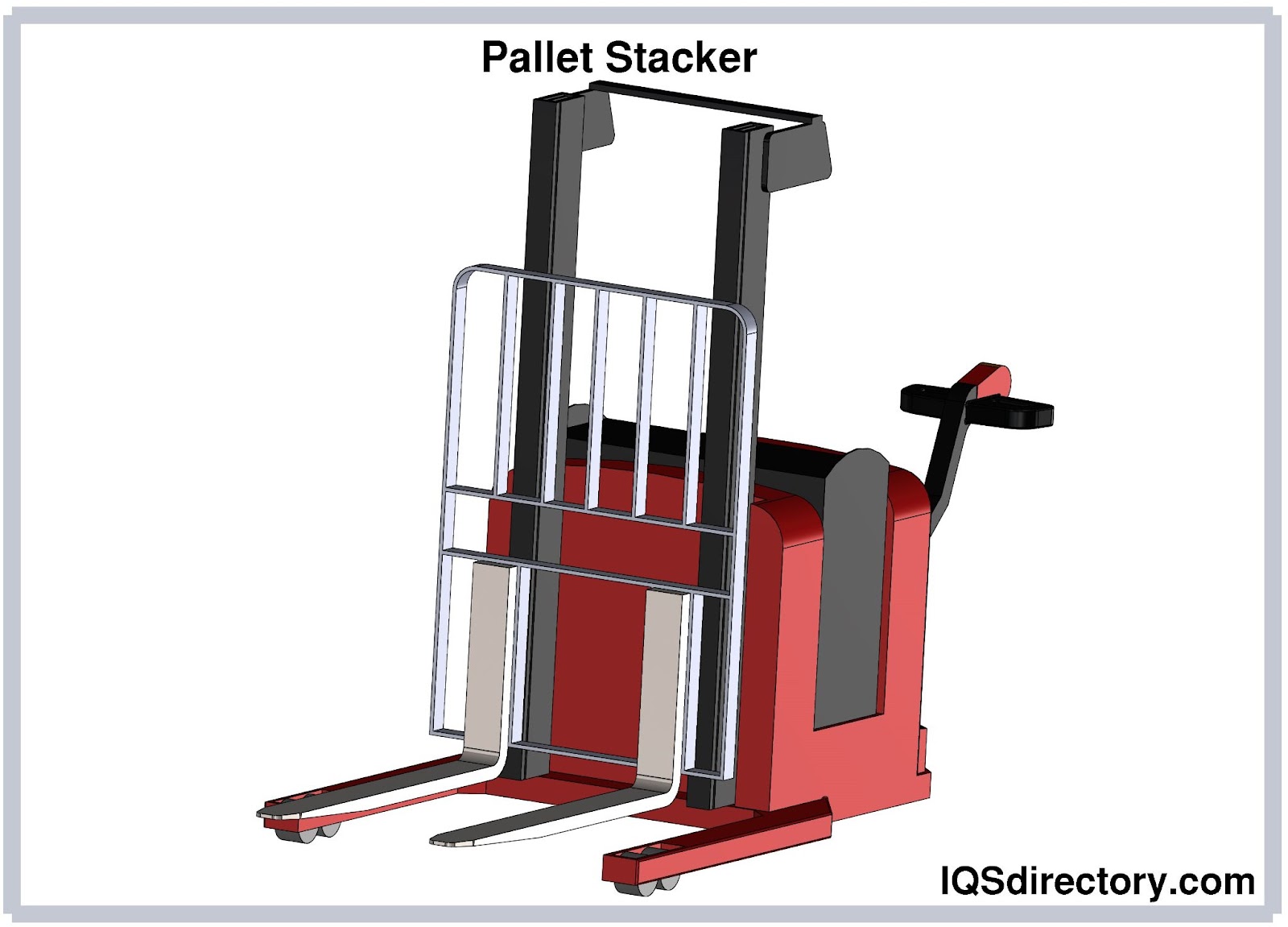
A pallet stacker is a machine designed to assist the user in lifting, moving and handling palletized materials with ease. A pallet itself is a flat and horizontal structure used to support goods in a sturdy fashion...
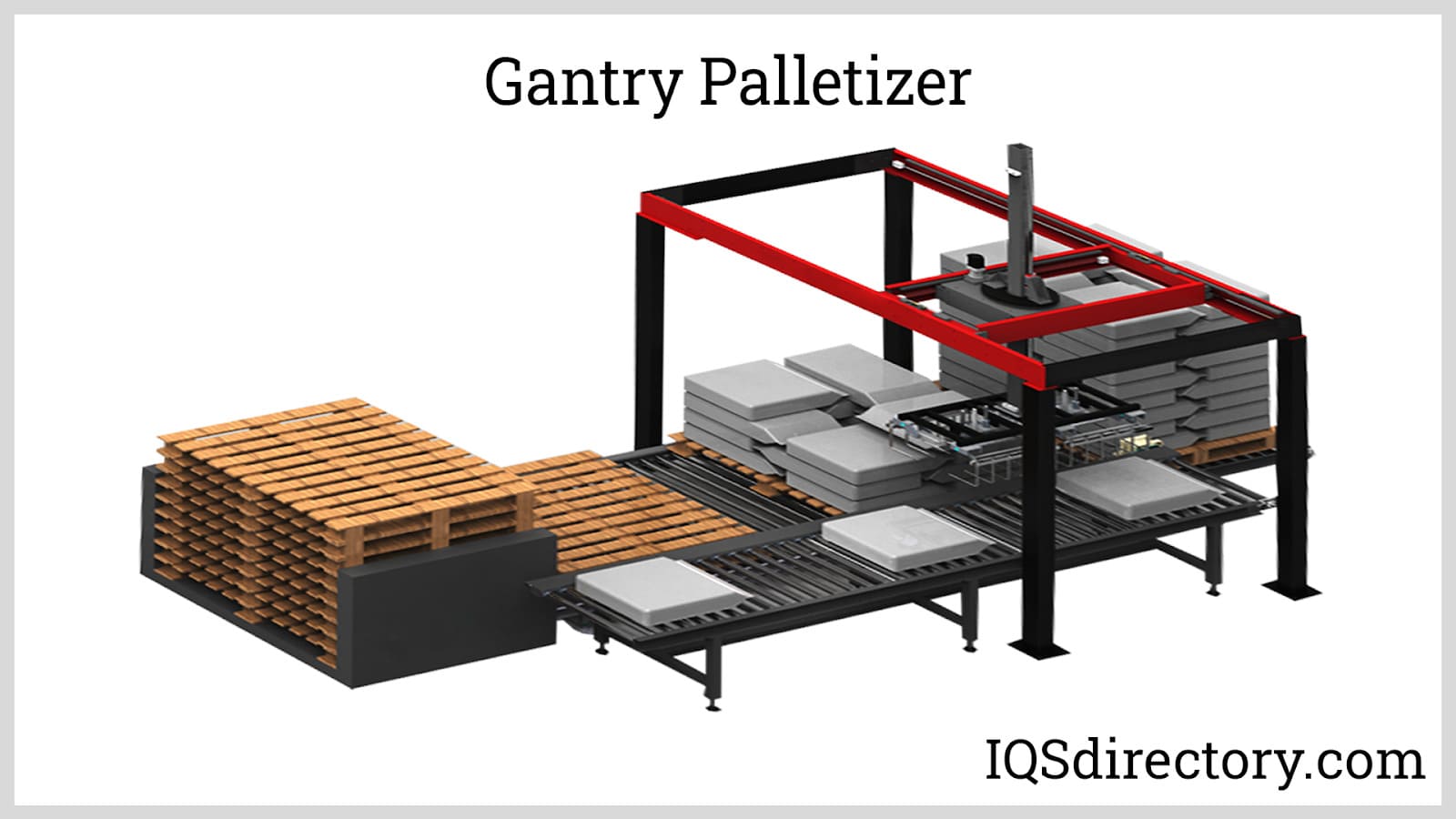
A palletizer is an automated material handling machine used to stack and orient several individual products into a single load for a more convenient and economical method of handling, storage, and shipment. Palletizers are usually part of a bigger packaging process...
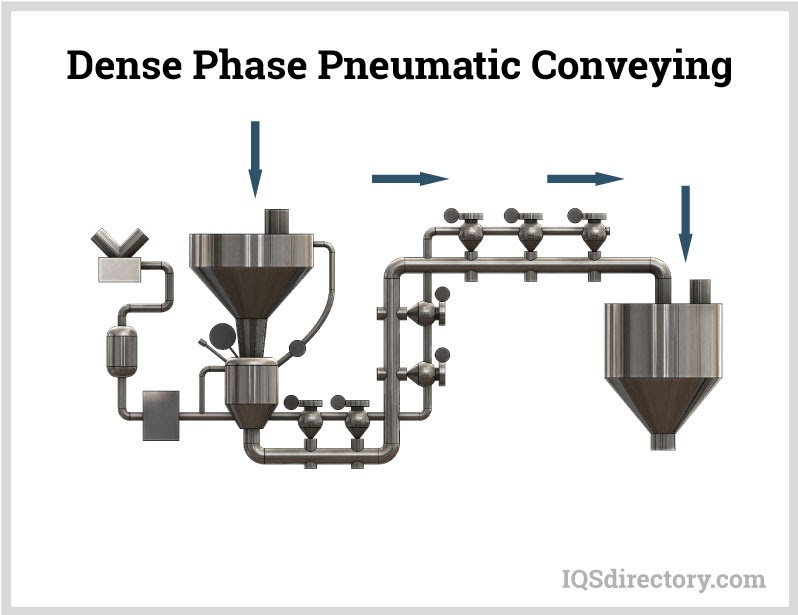
Pneumatic conveying is a method for transferring bulk materials, like powders and granules, using compressed gas or air, from one processing center to another. Material is moved through an enclosed conveying line or tube using a combination of pressure differential and airflow from a blower or fan...
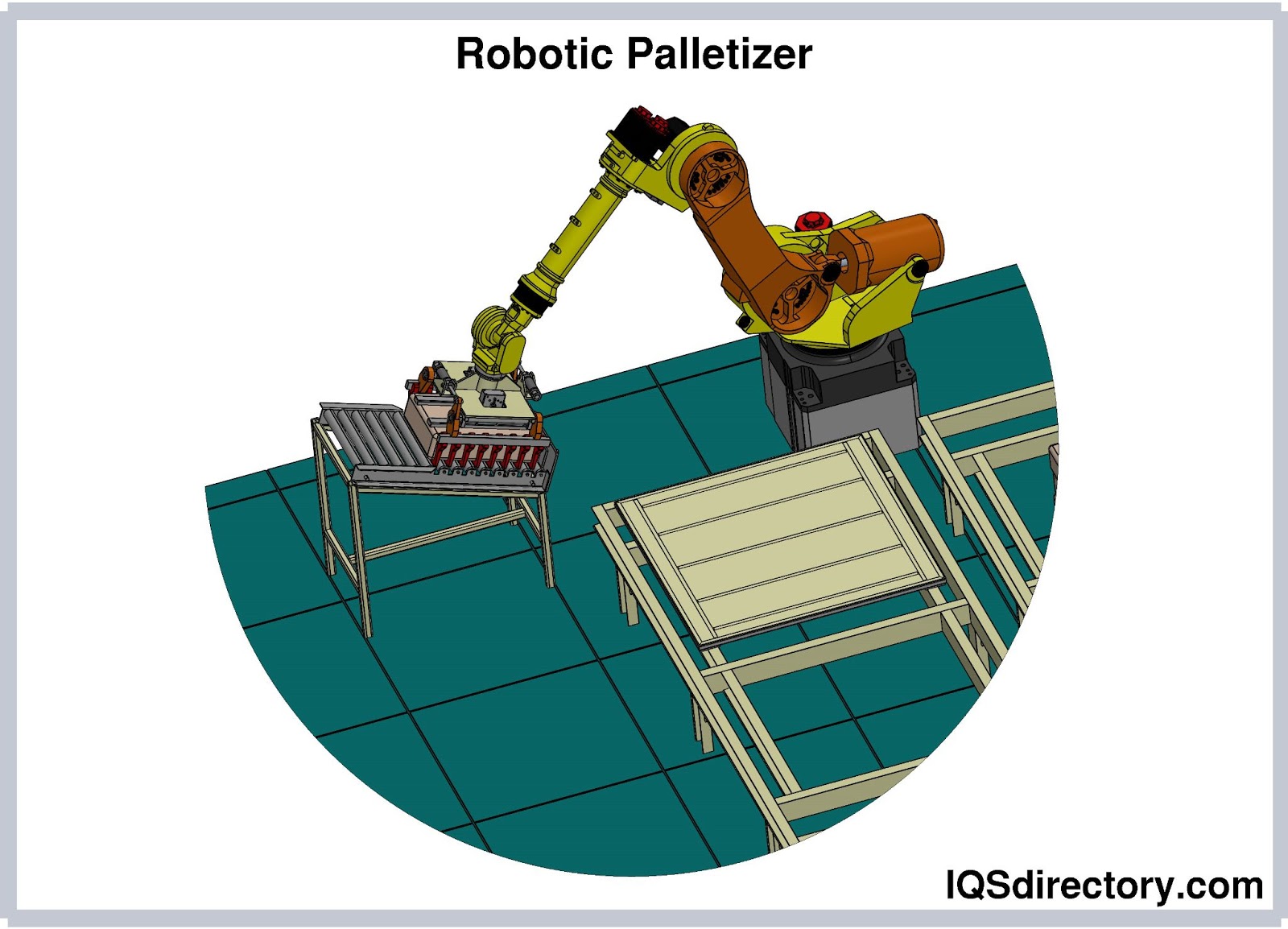
A robotic palletizer is a type of palletizer that employs a robotic arm to pick, orient, and place individual products and arrange them into a single stack of load. They are the next generation of palletizers, and they will supersede conventional palletizers...
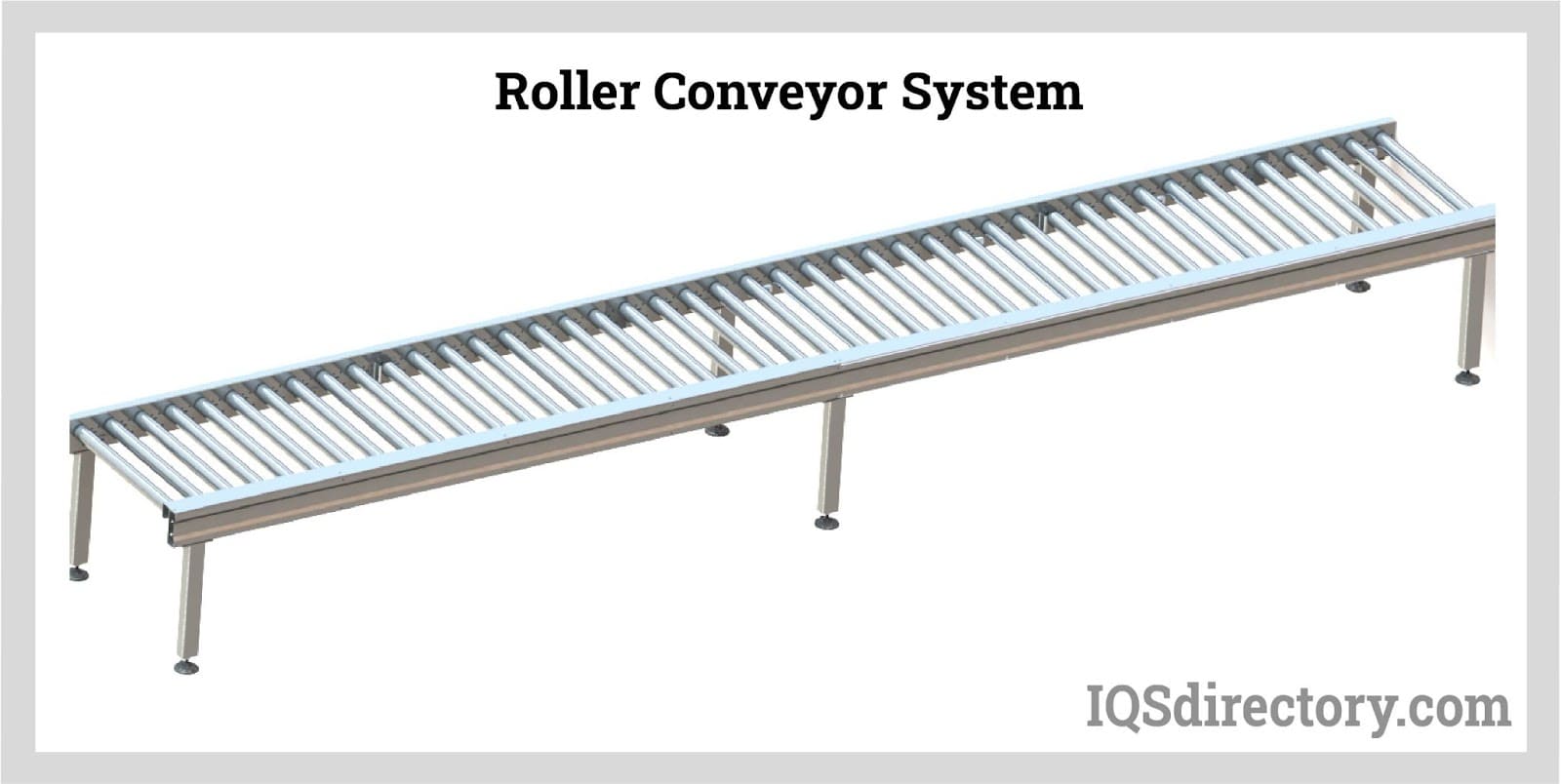
Roller conveyors are a type of conveyor belt that allows objects to skate on its surface by using rollers, which are equally spaced revolving cylinders. They transport stuff from one location to another...
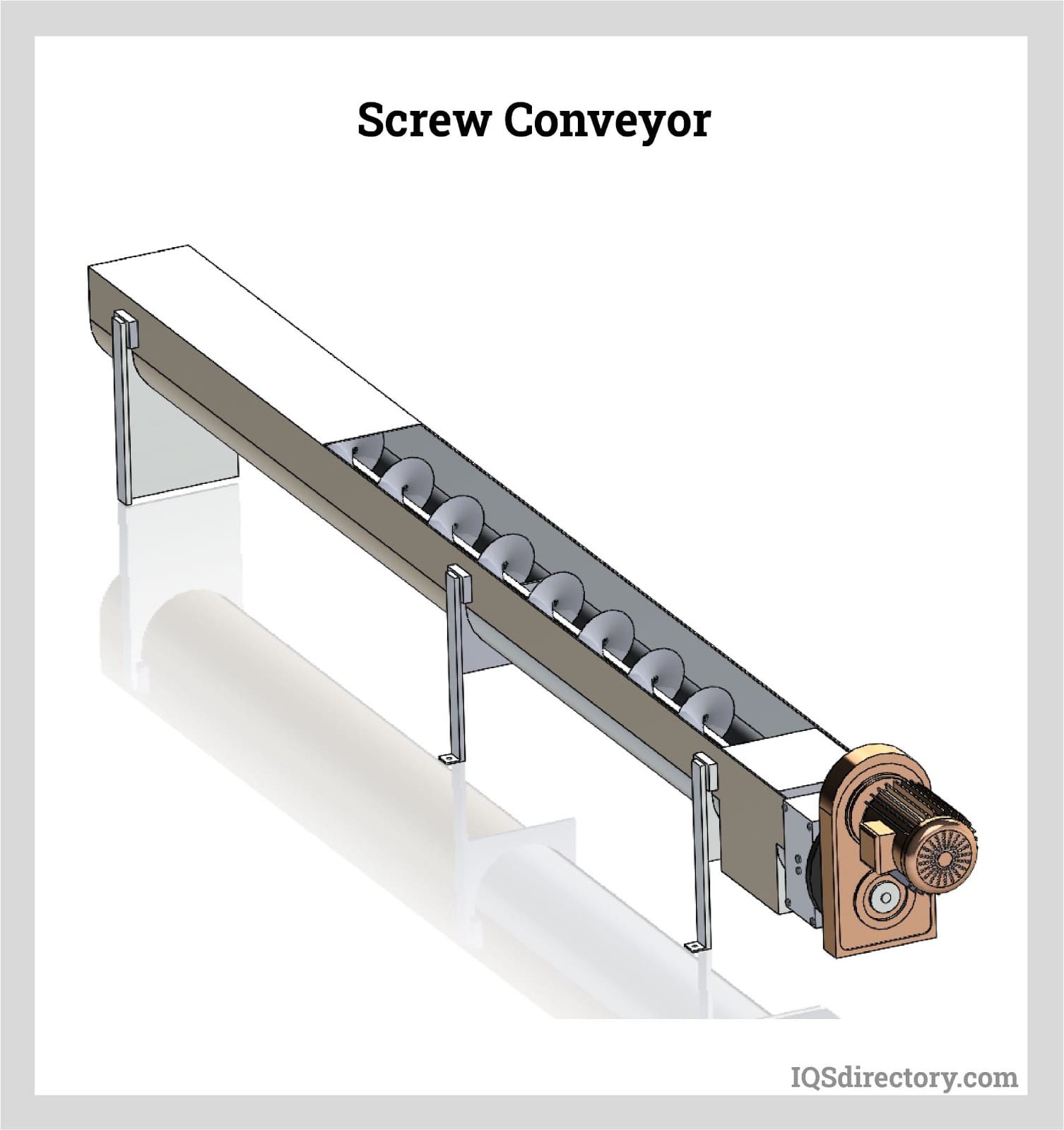
Screw conveyors, or auger conveyors, are industrial equipment used in transporting bulk quantities of granular solids (e.g., powder, grains, granules), semi-solids, liquids, and even non-flowing materials from one point to another...
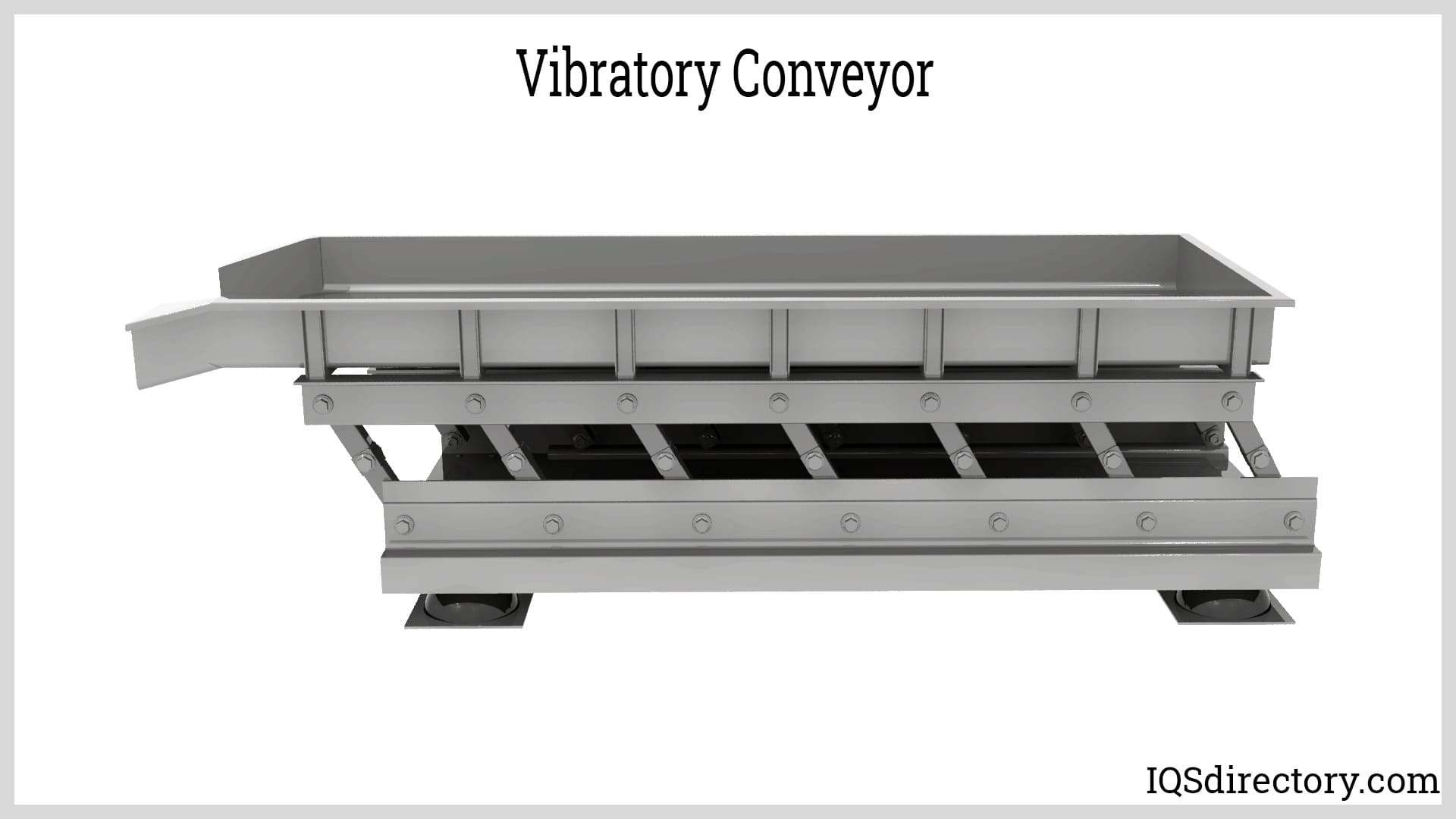
Vibratory conveyors are material-handling equipment used to transport fine to coarse-grained bulk materials. These vibratory conveyors are strong conveying equipment utilized for bulk commodities with fine to coarse graininess...
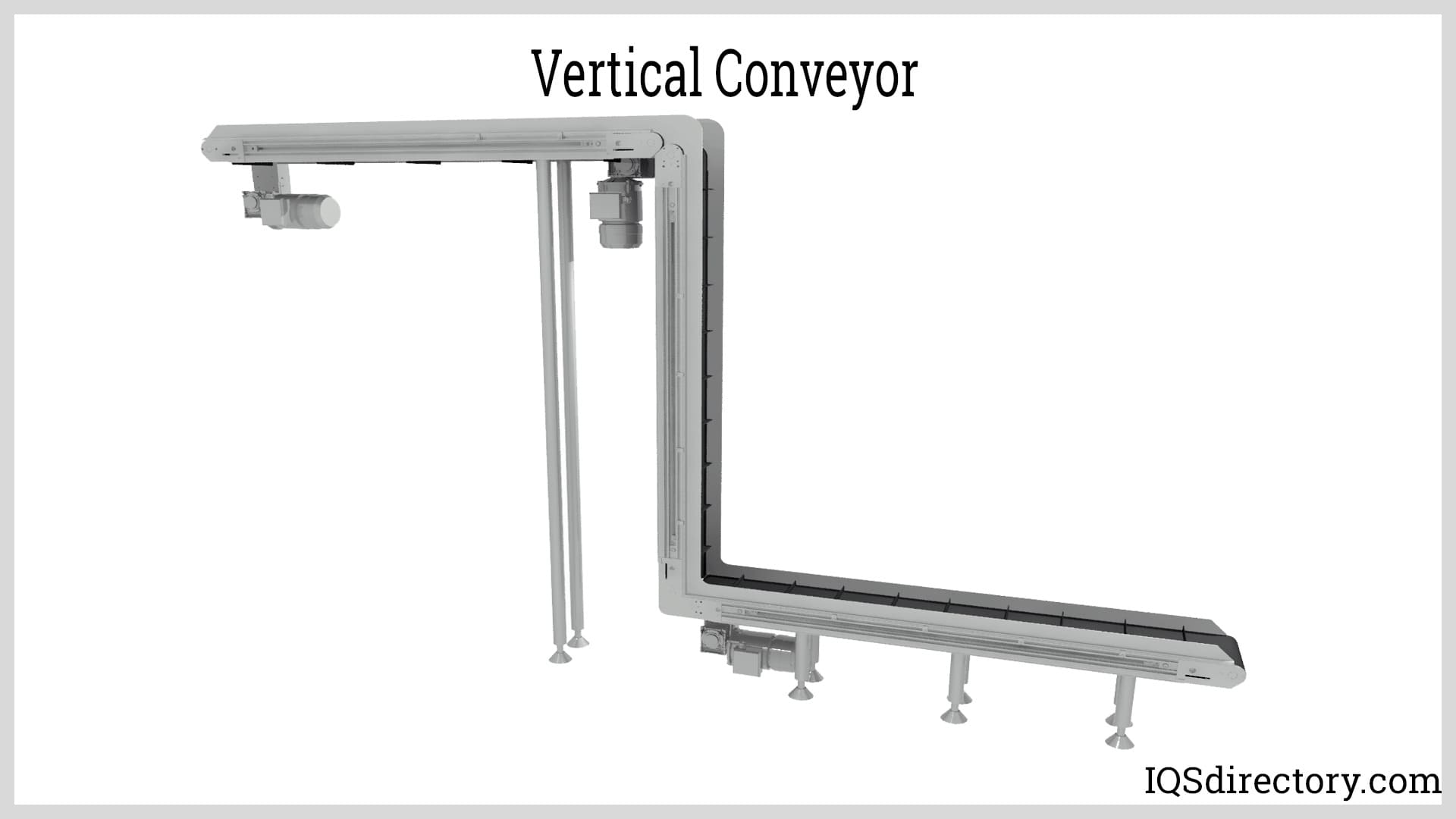
A vertical conveyor is an engineered mechanical method for moving goods, products, supplies, parts, and components from a lower level to a higher level or from a higher level to a lower level. They are...
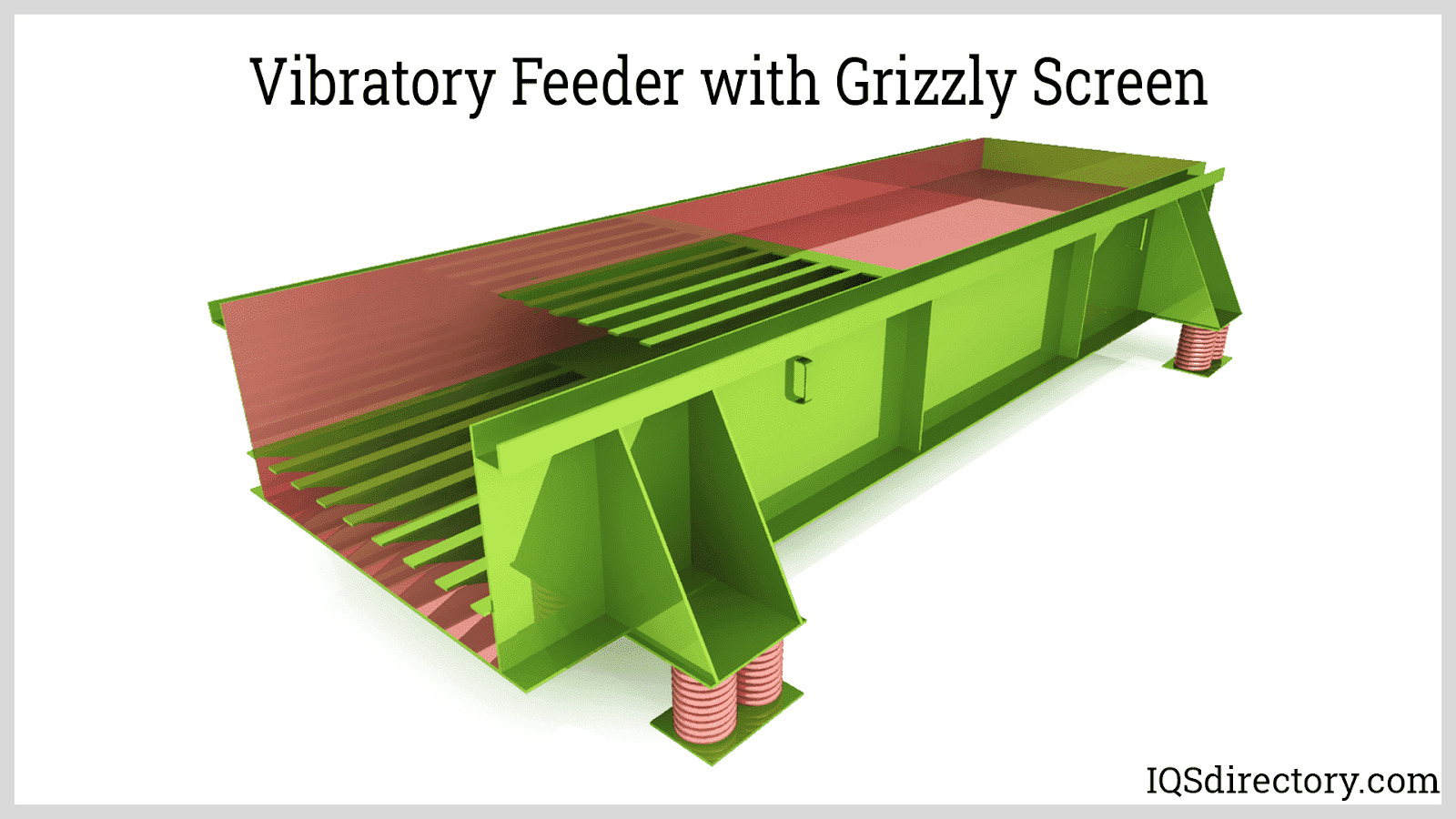
Vibratory feeders are short conveyors used to transport bulk materials utilizing a controlled vibratory force system and gravity. The vibrations impart a combination of horizontal and vertical acceleration through tossing, hopping, or sliding-type of action to the materials being handled...
In 1954, when Arthur "Mac" Barrett, of Barrett Electronics Corporation, unveiled the first AGV, he named it Guide-o-Matic and described it as a driverless vehicle...